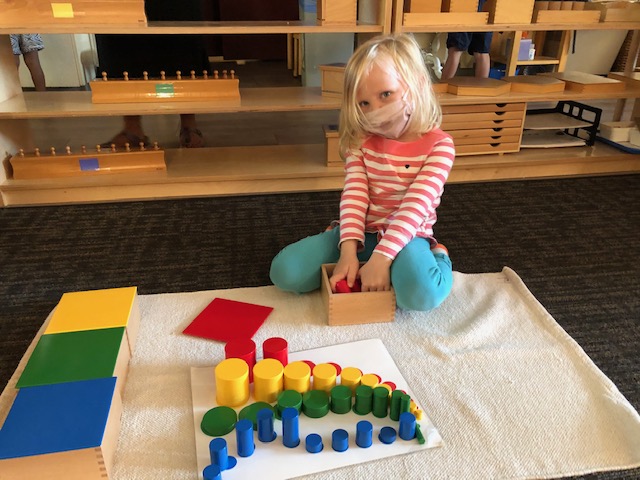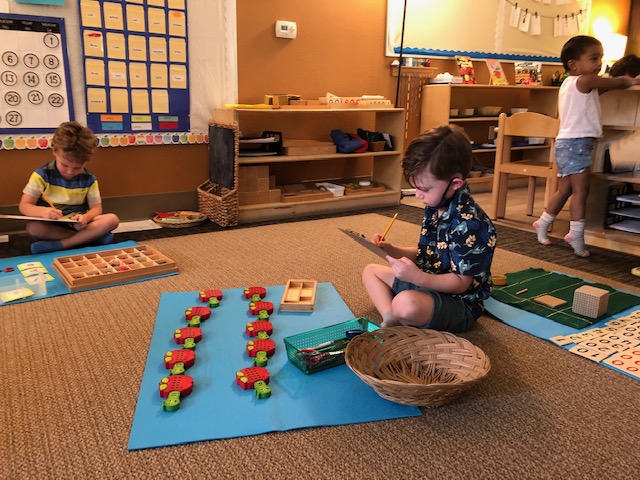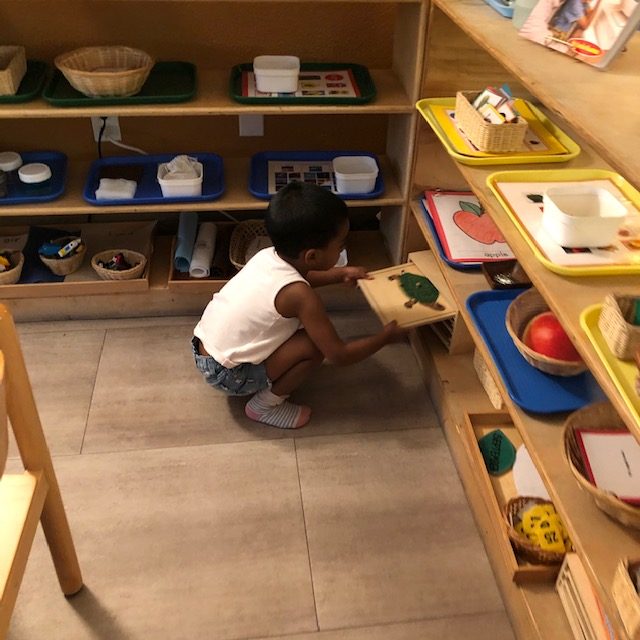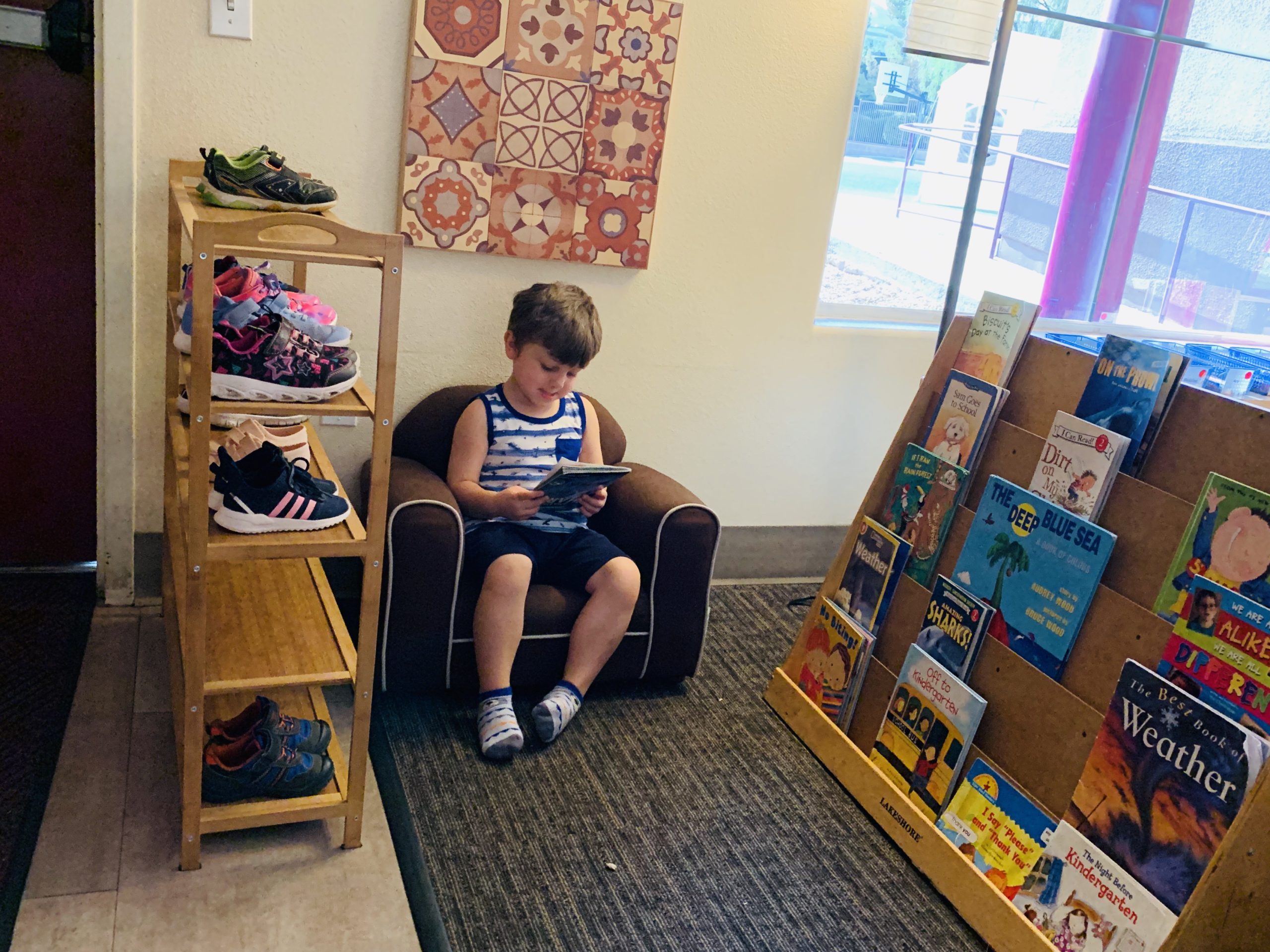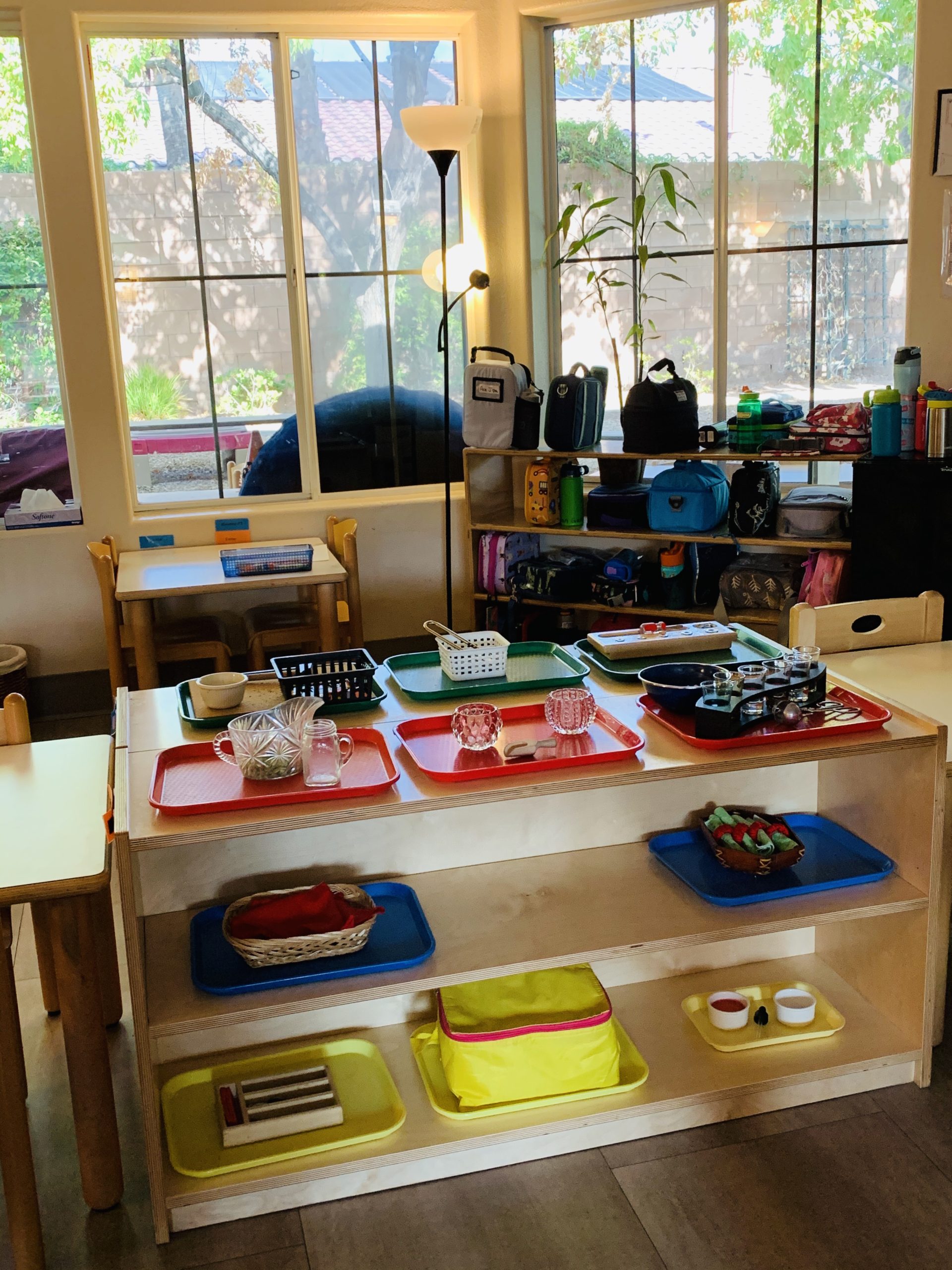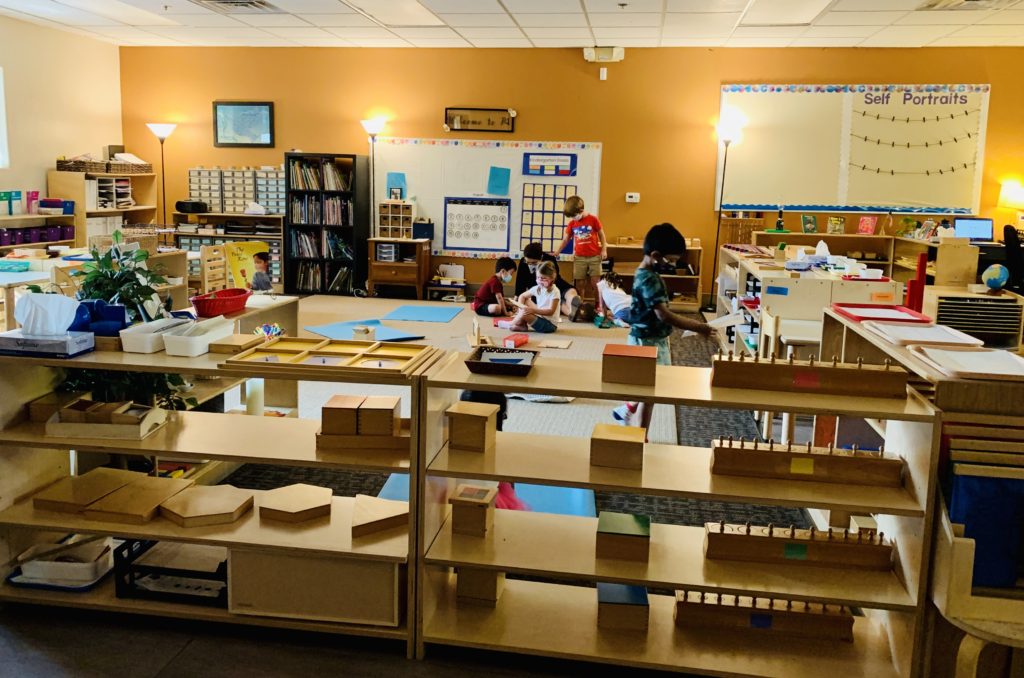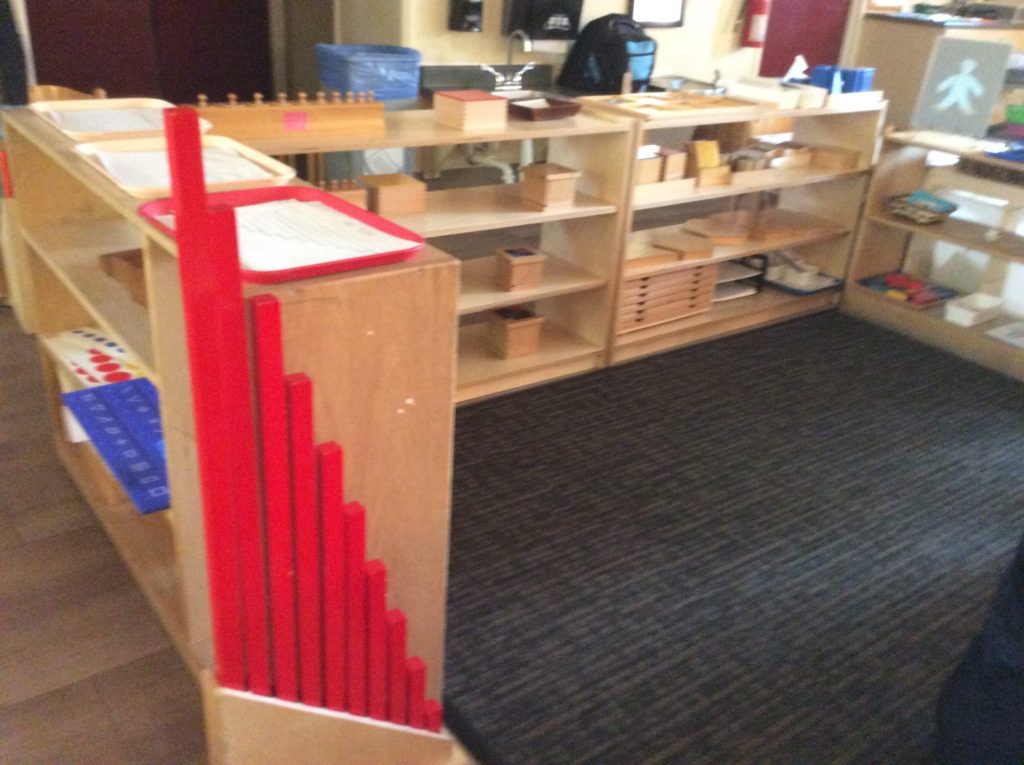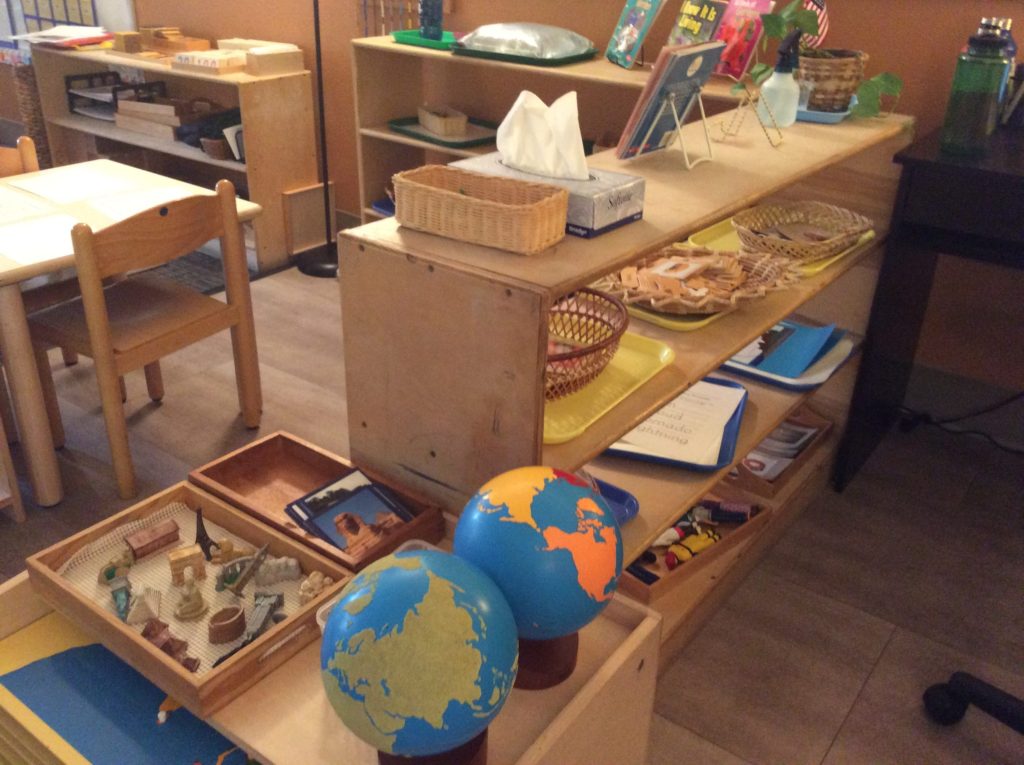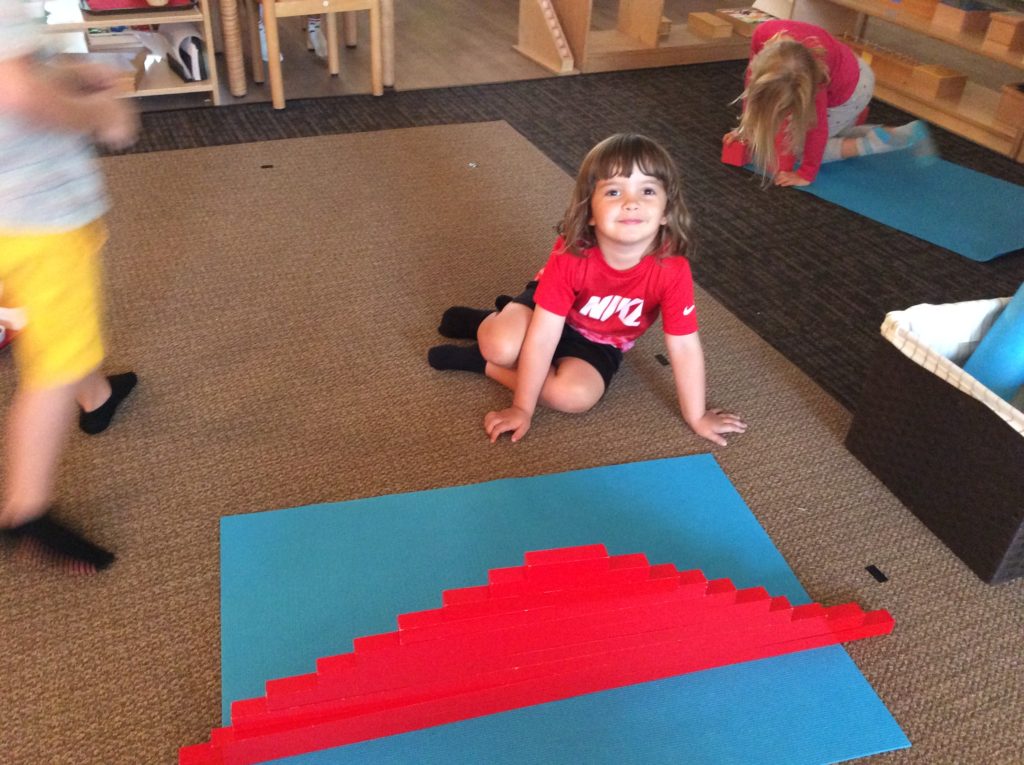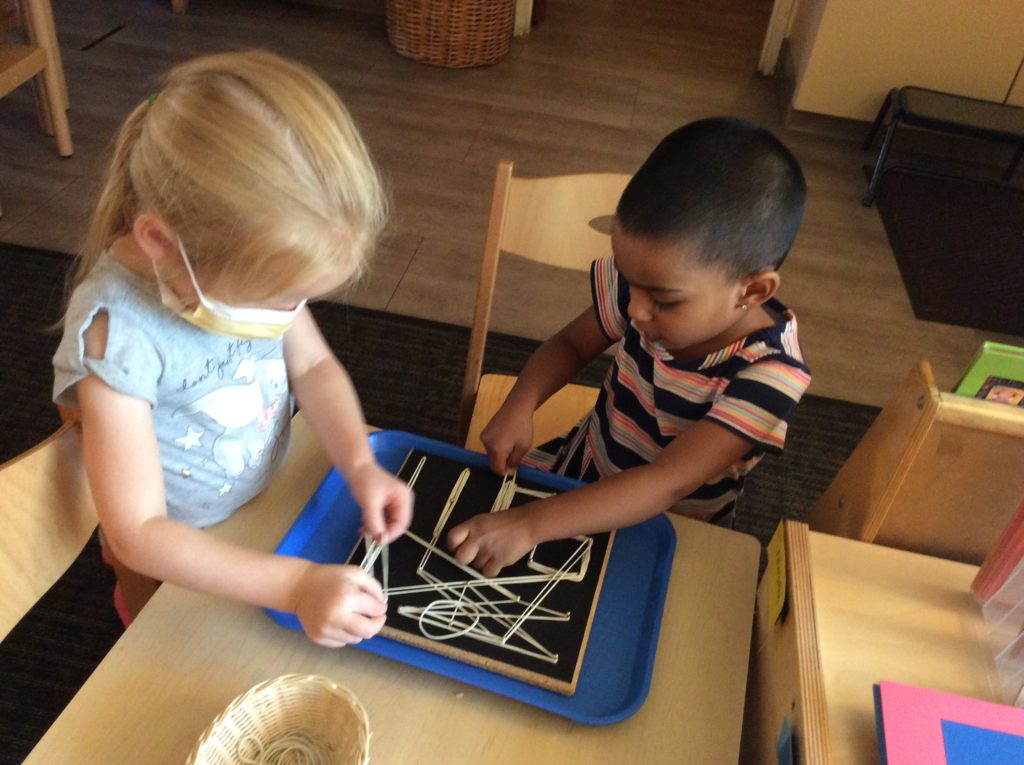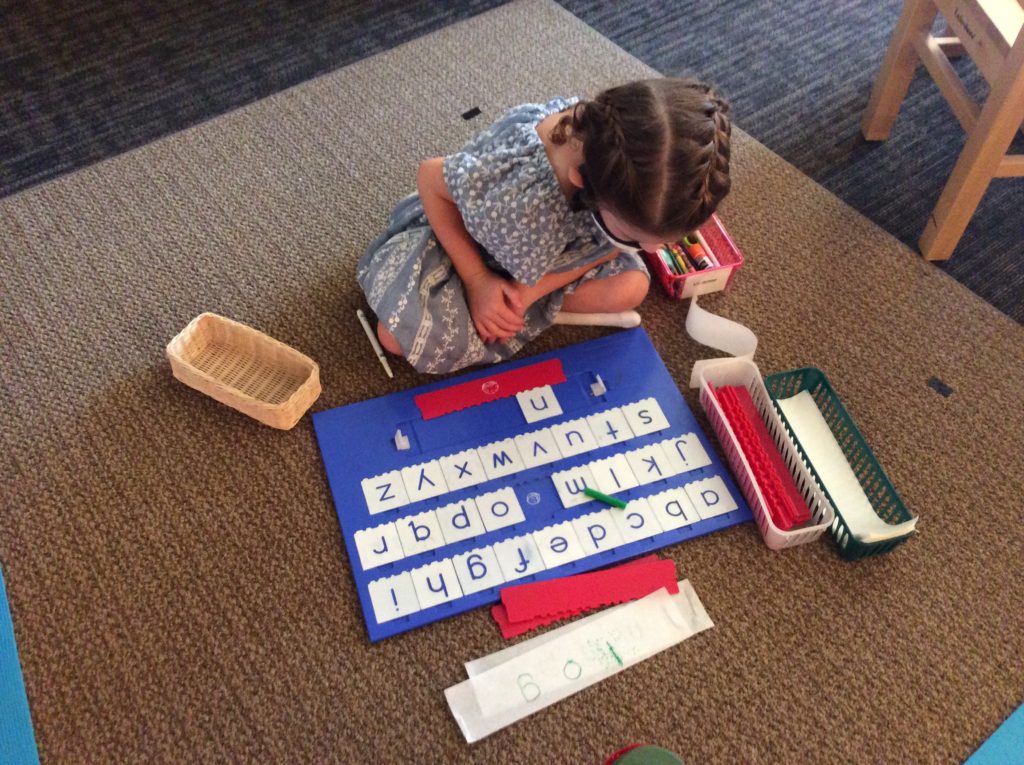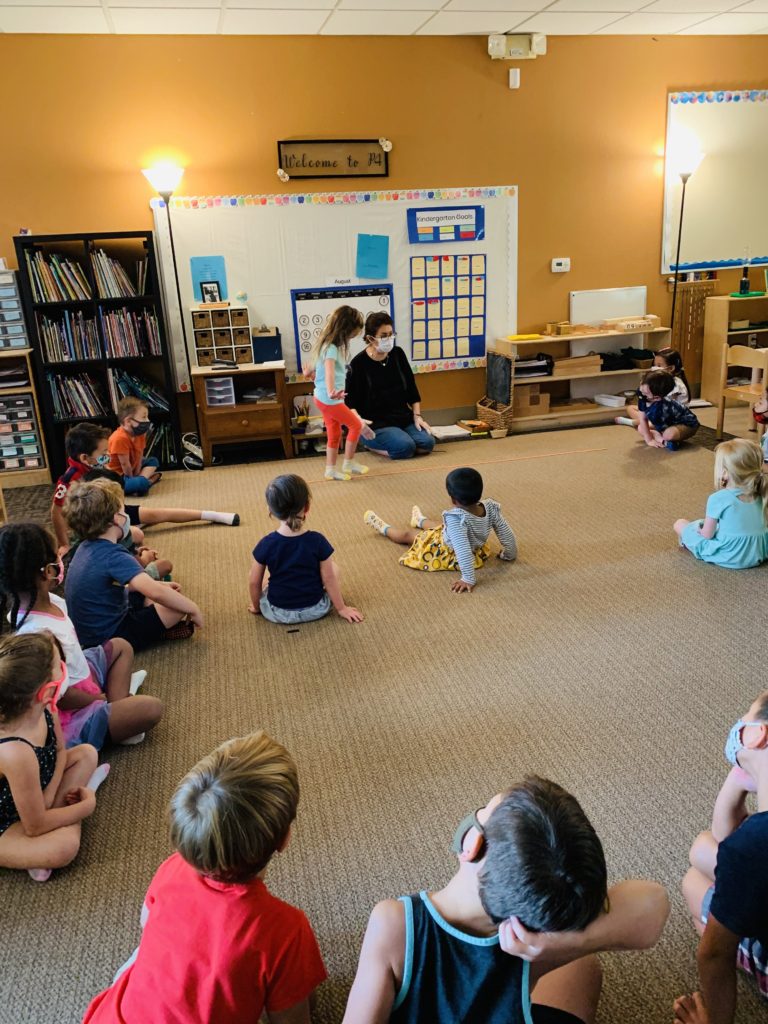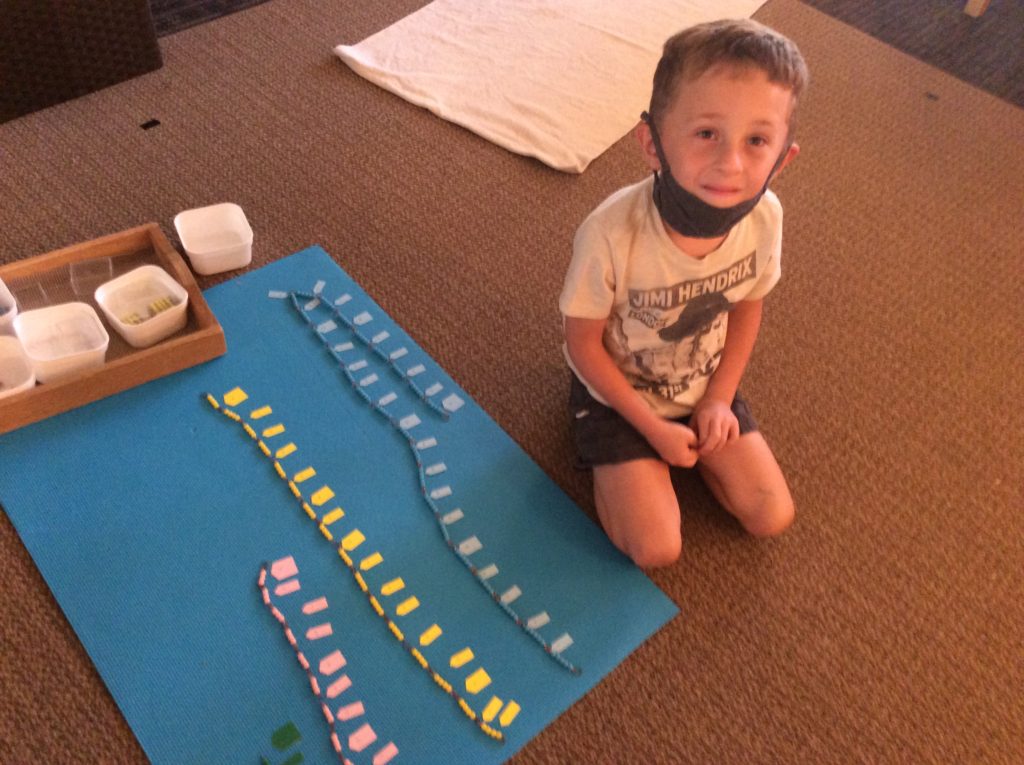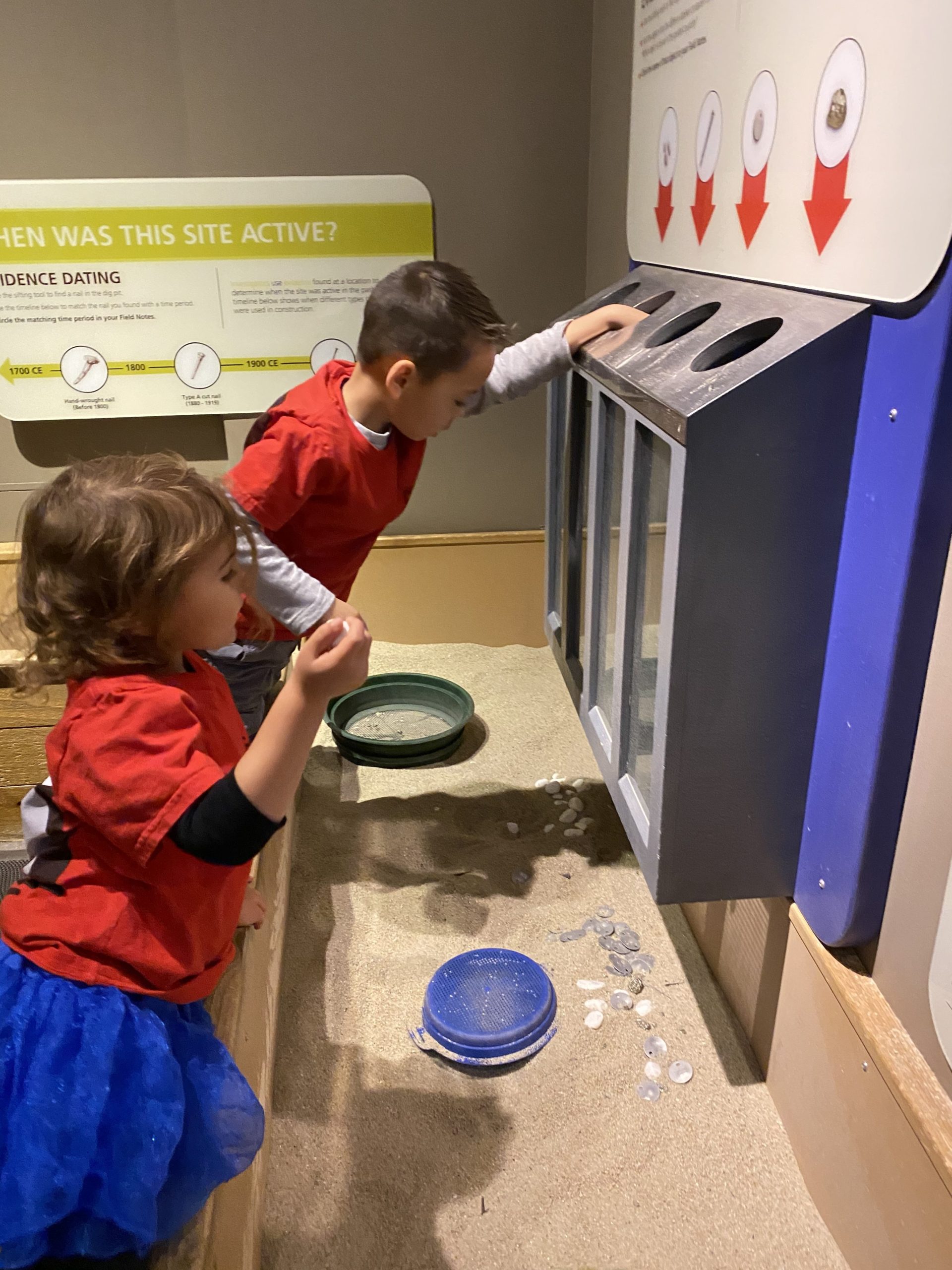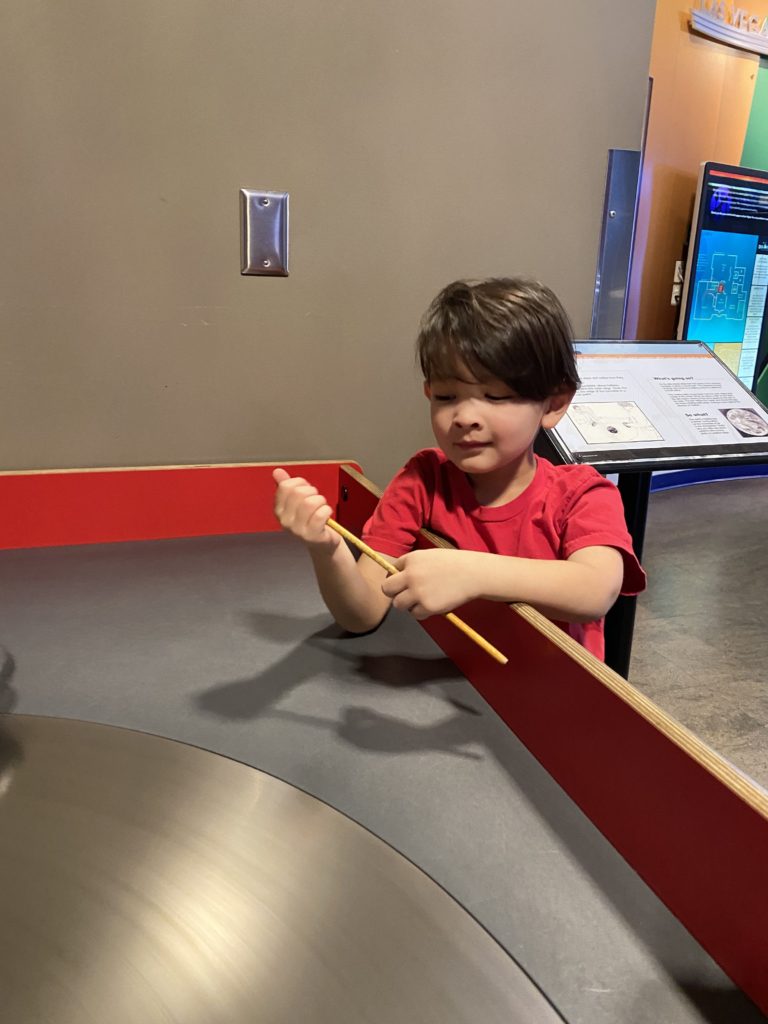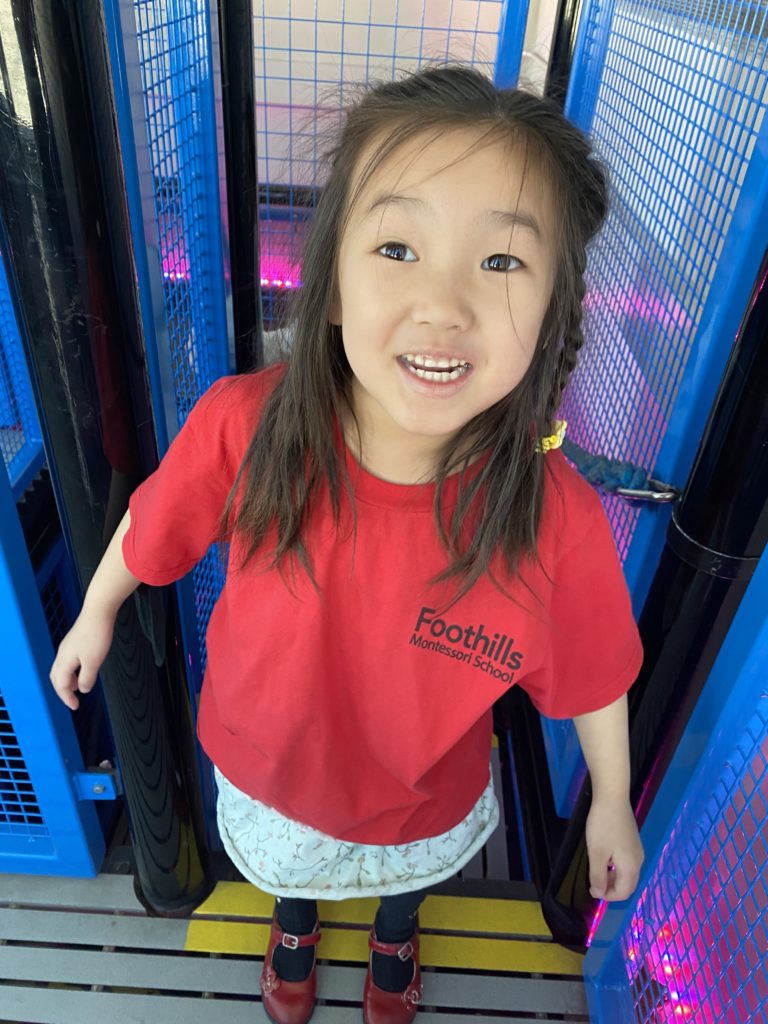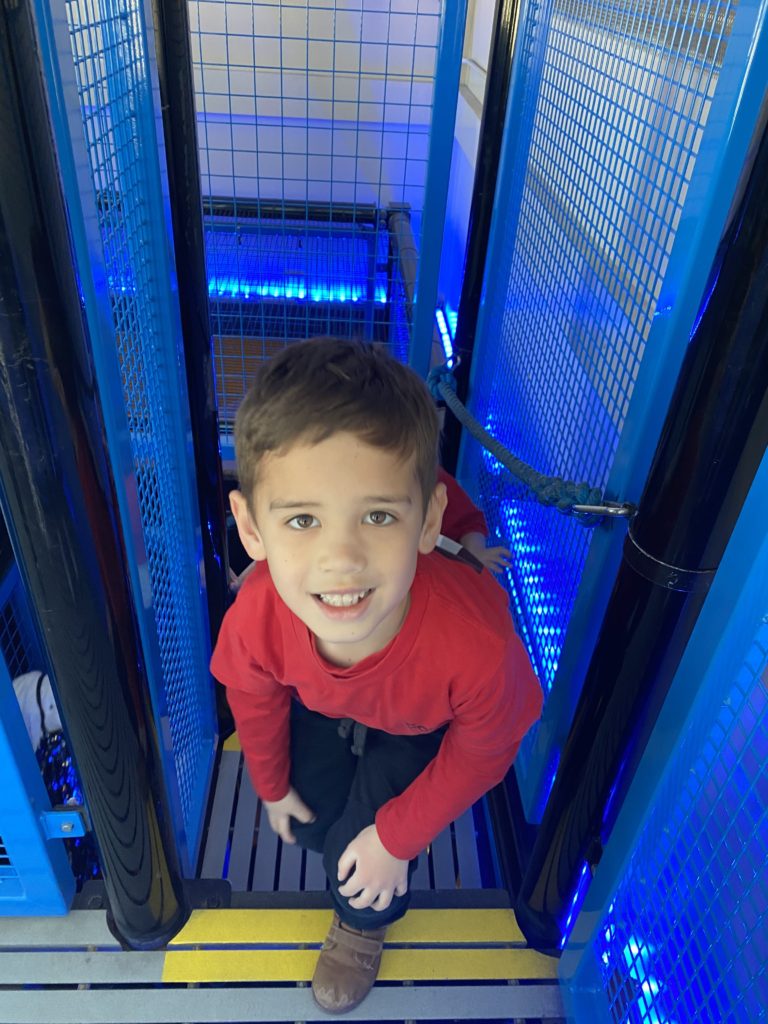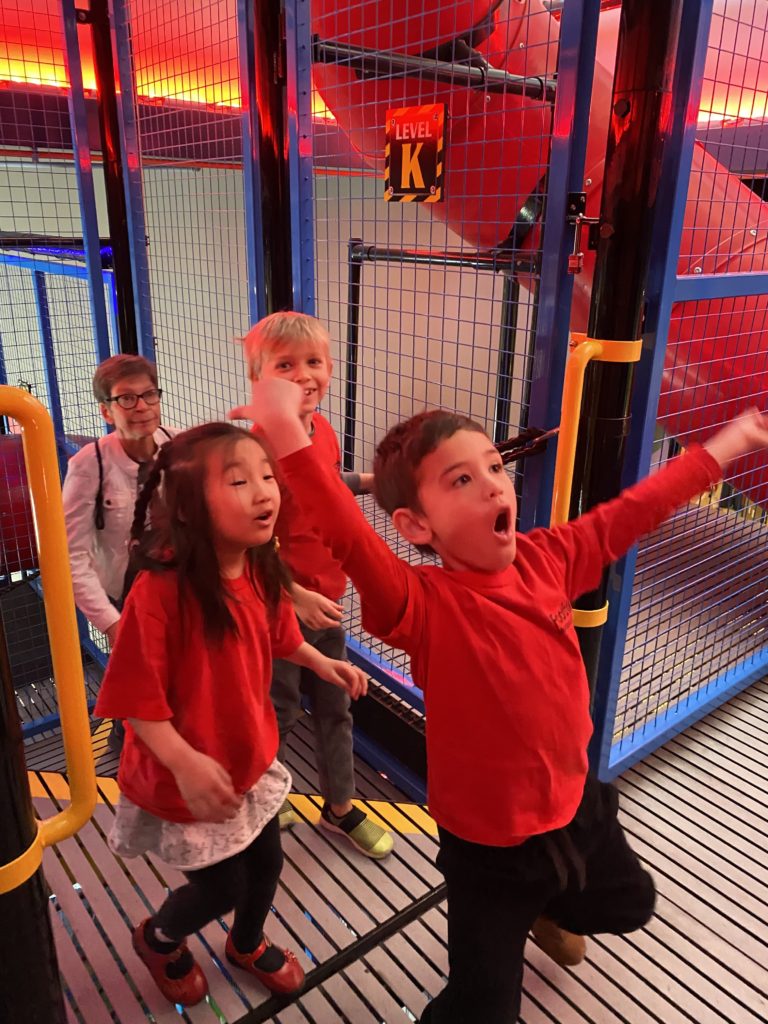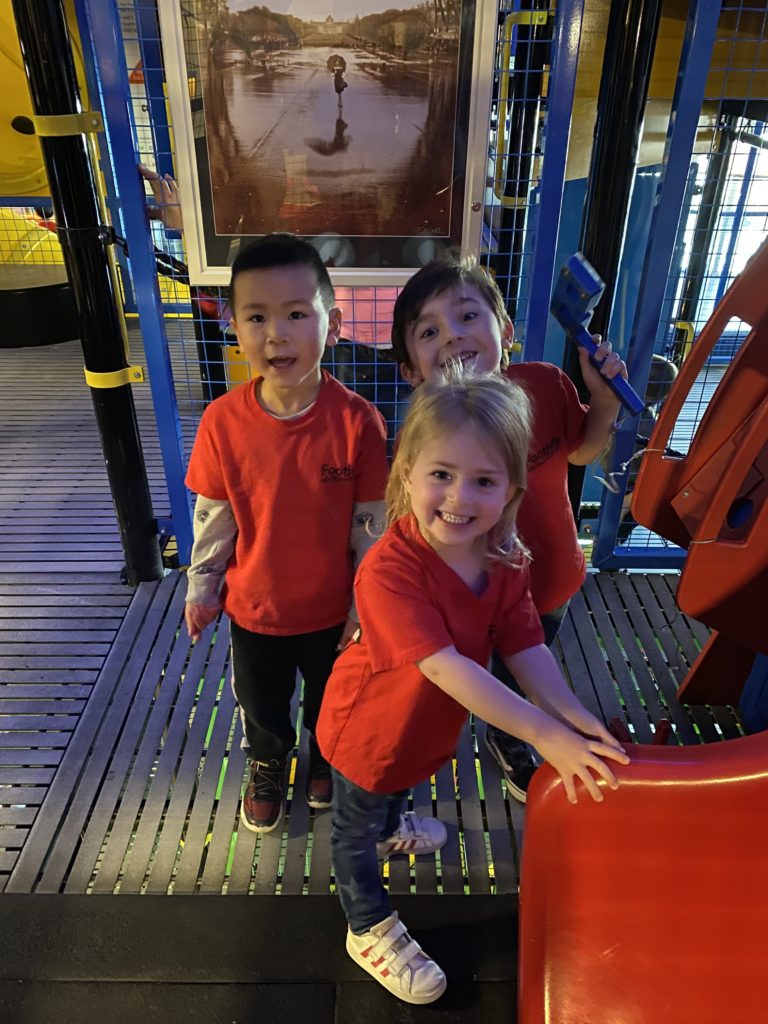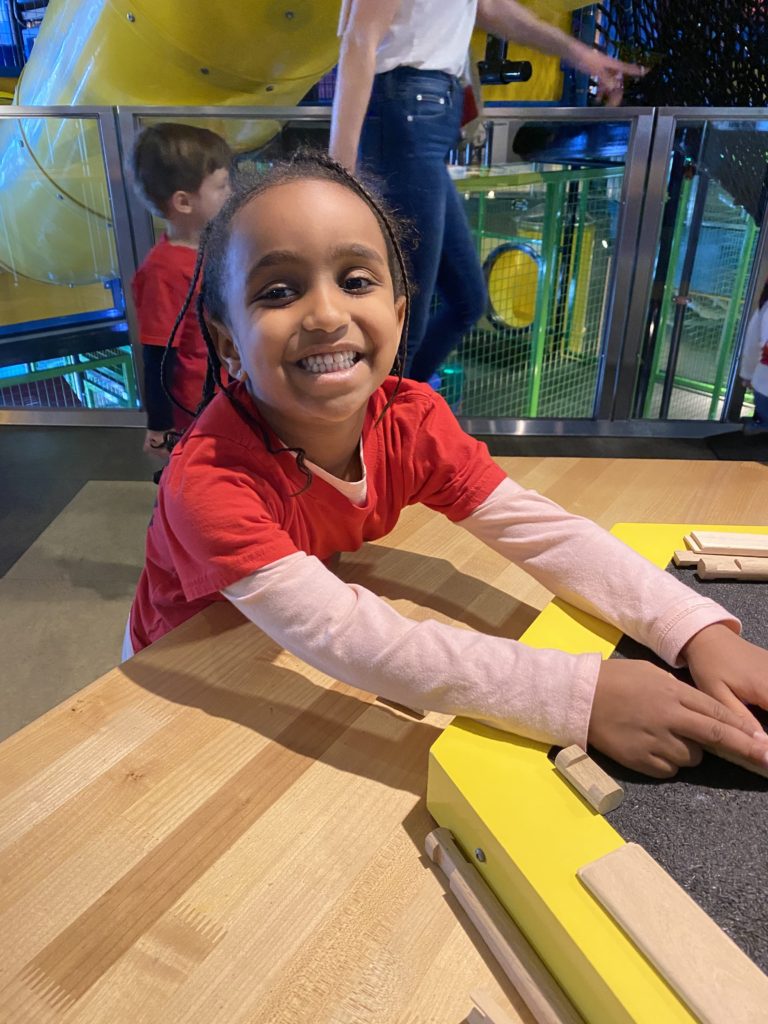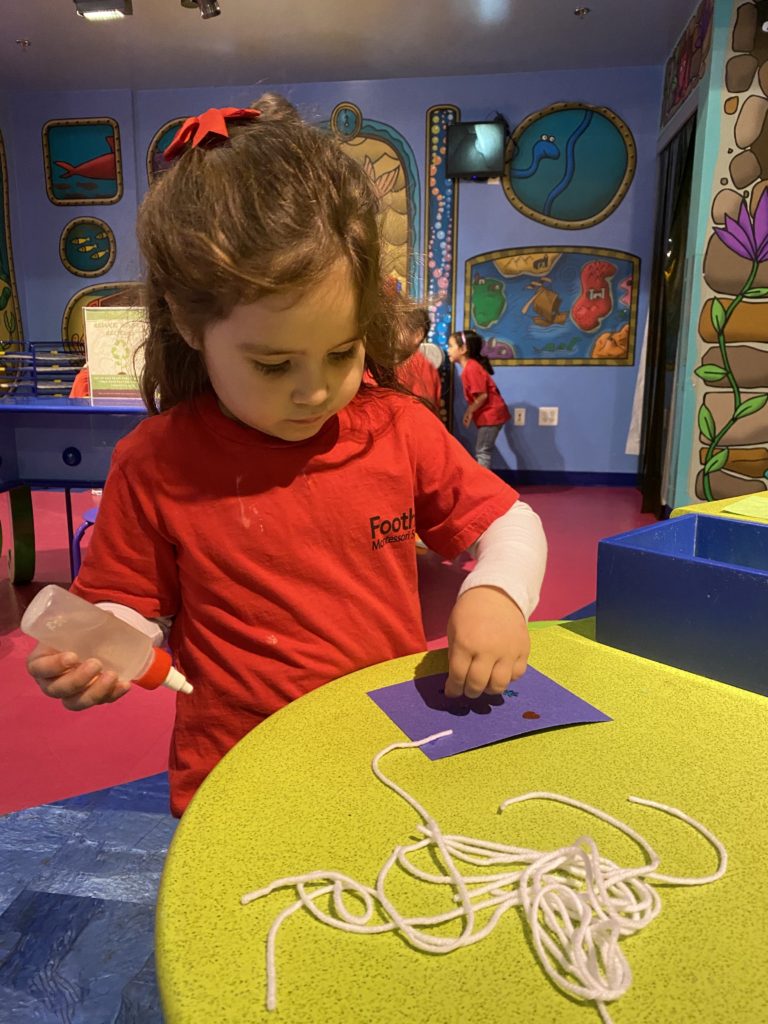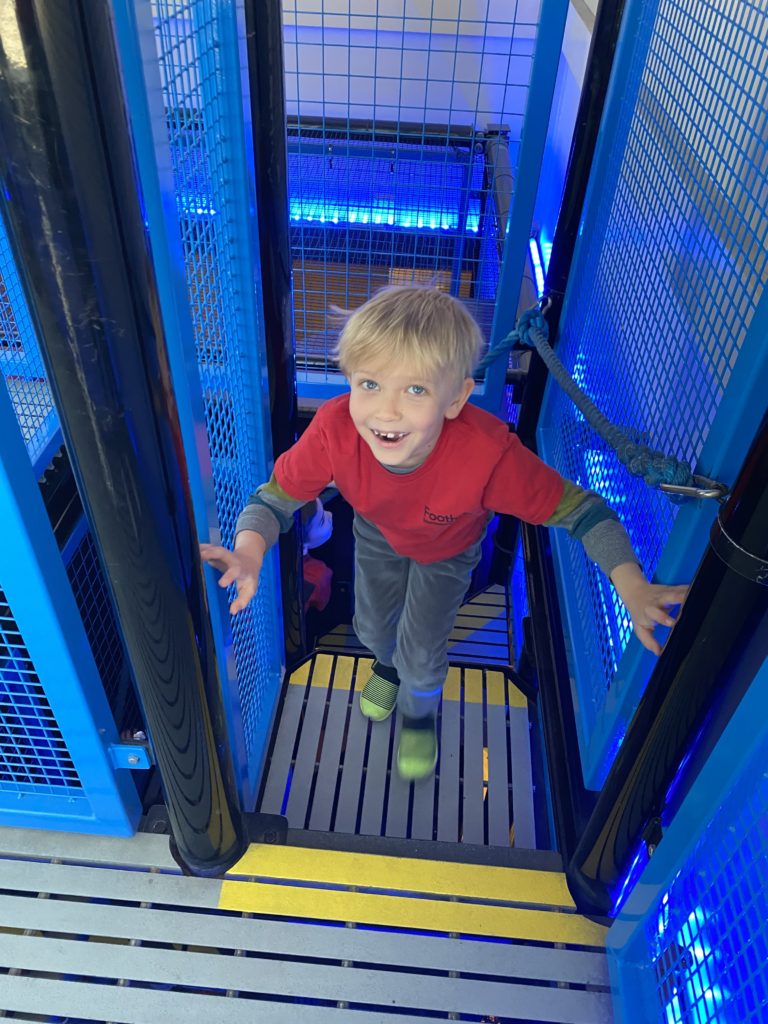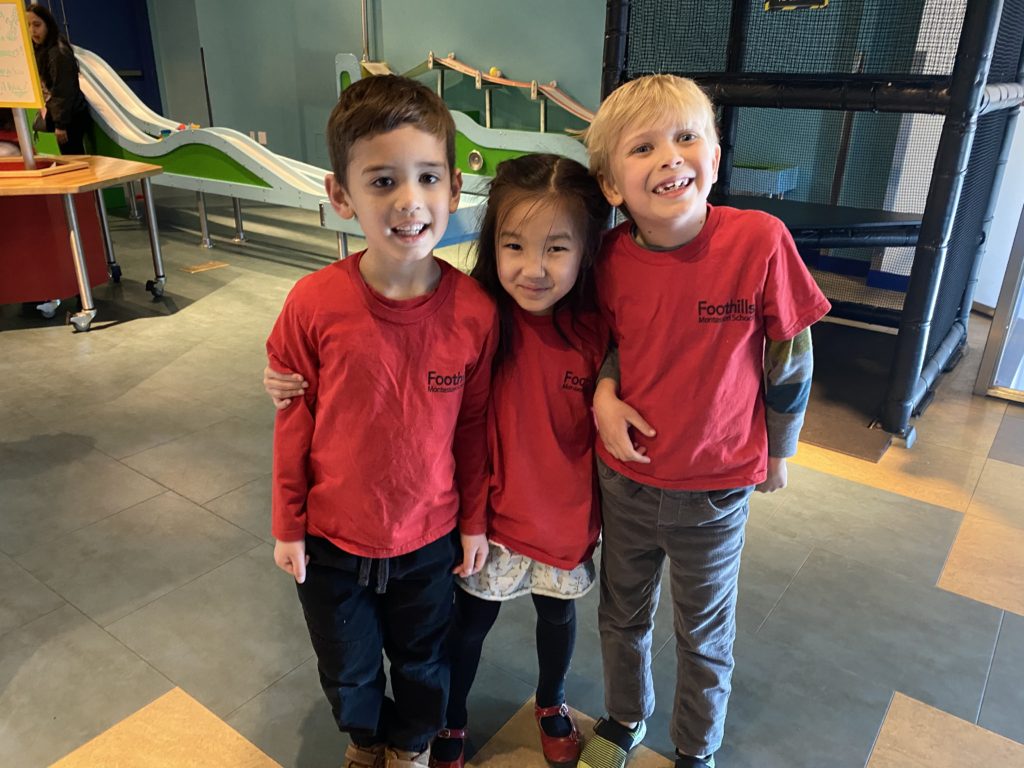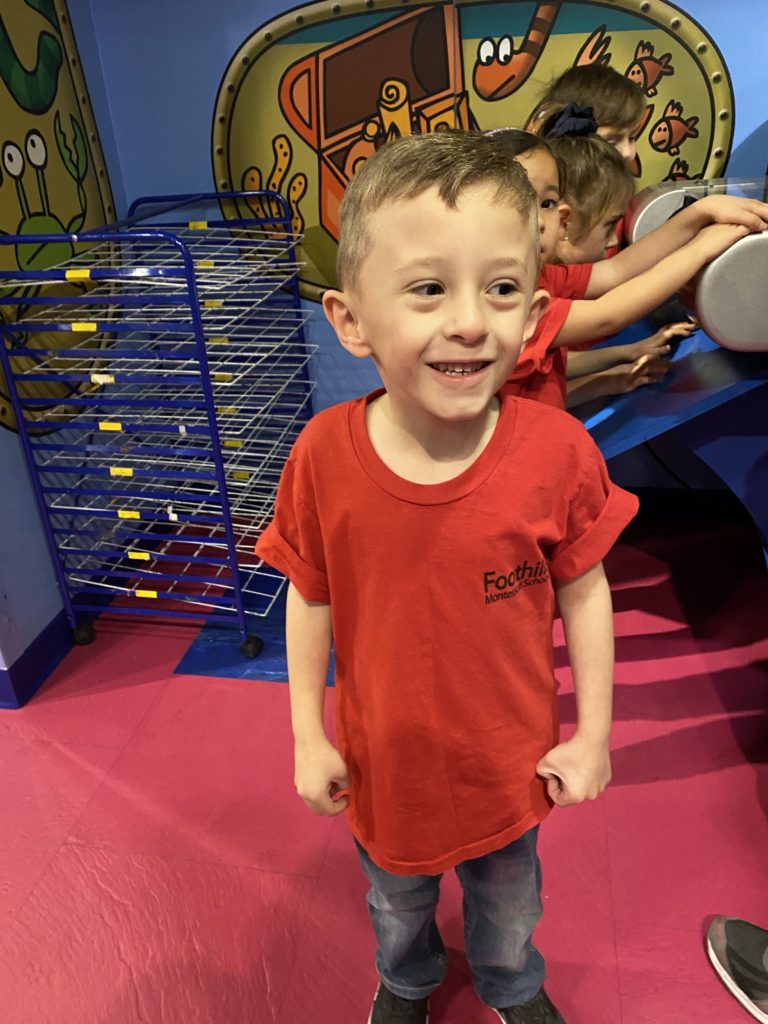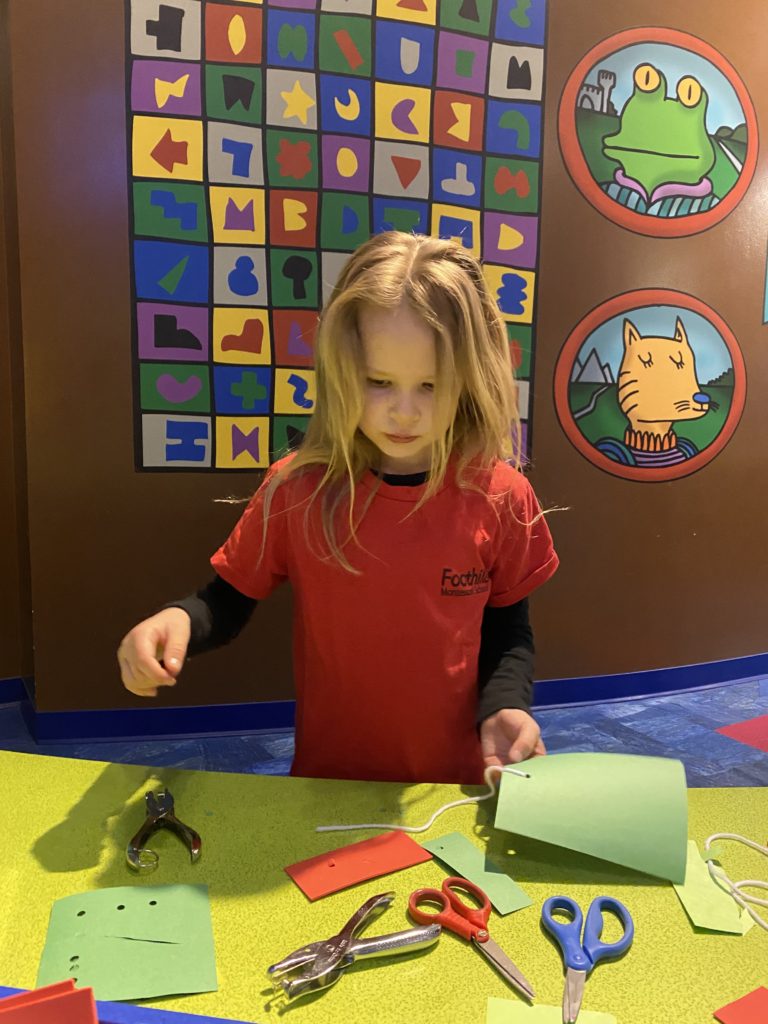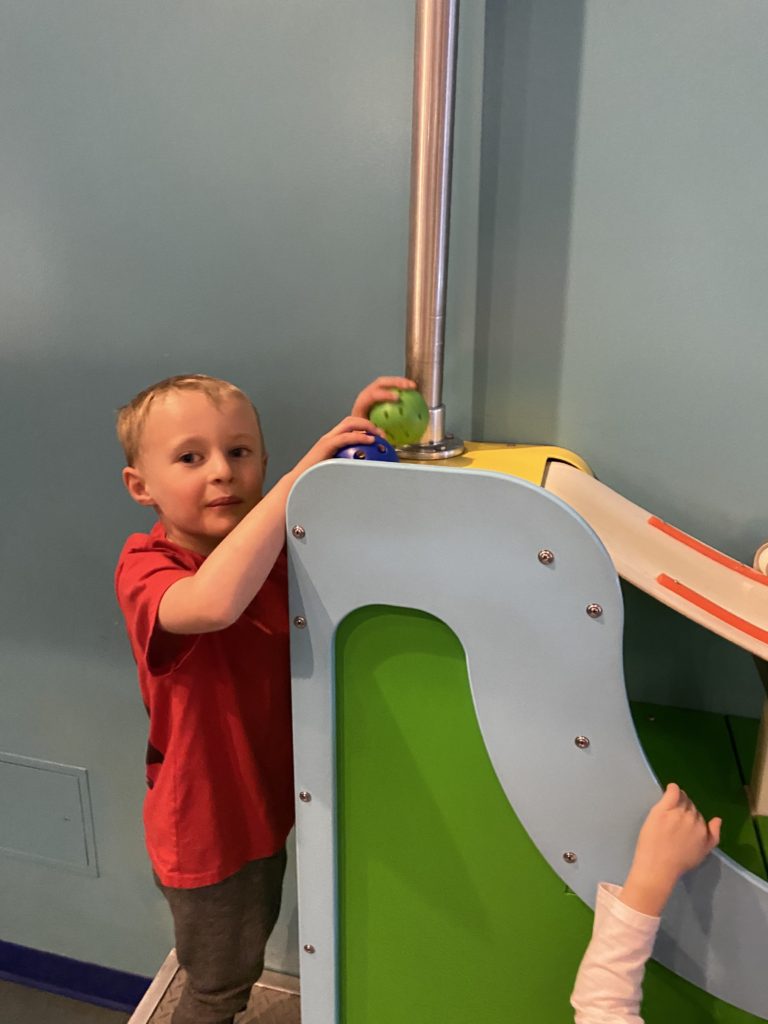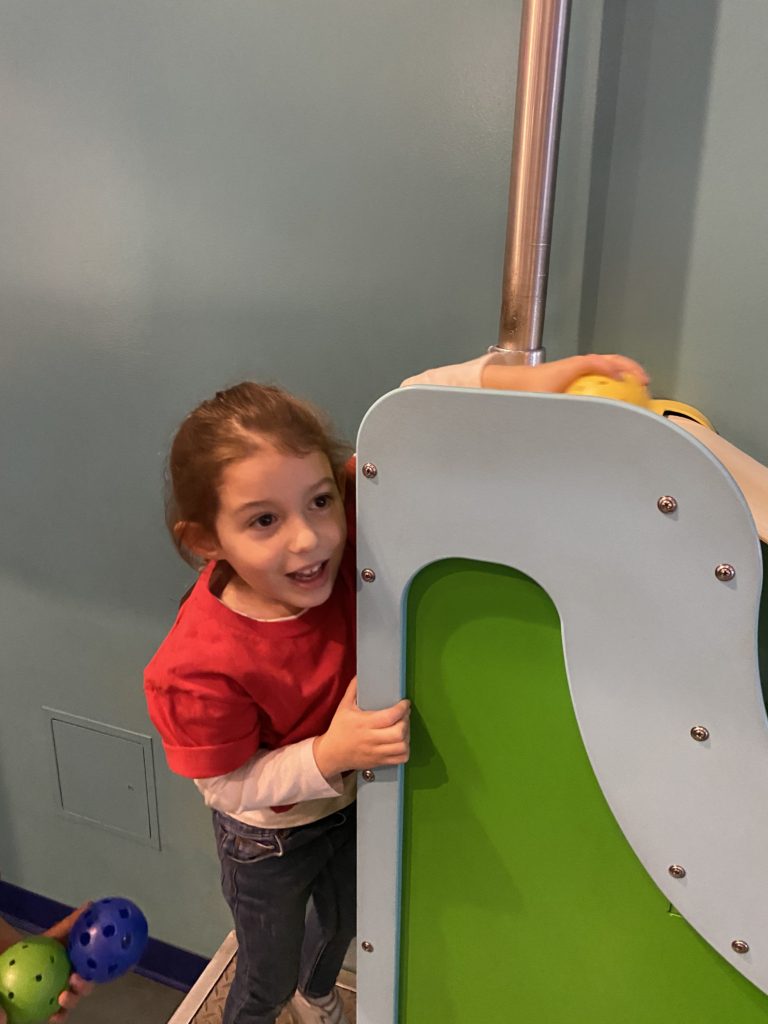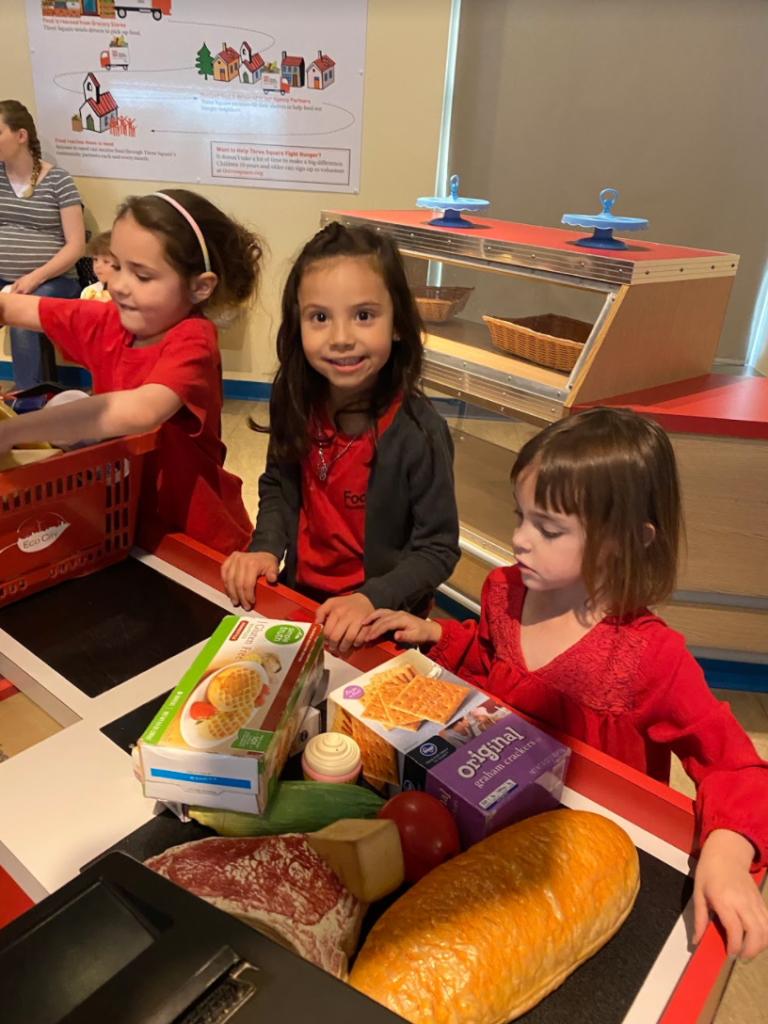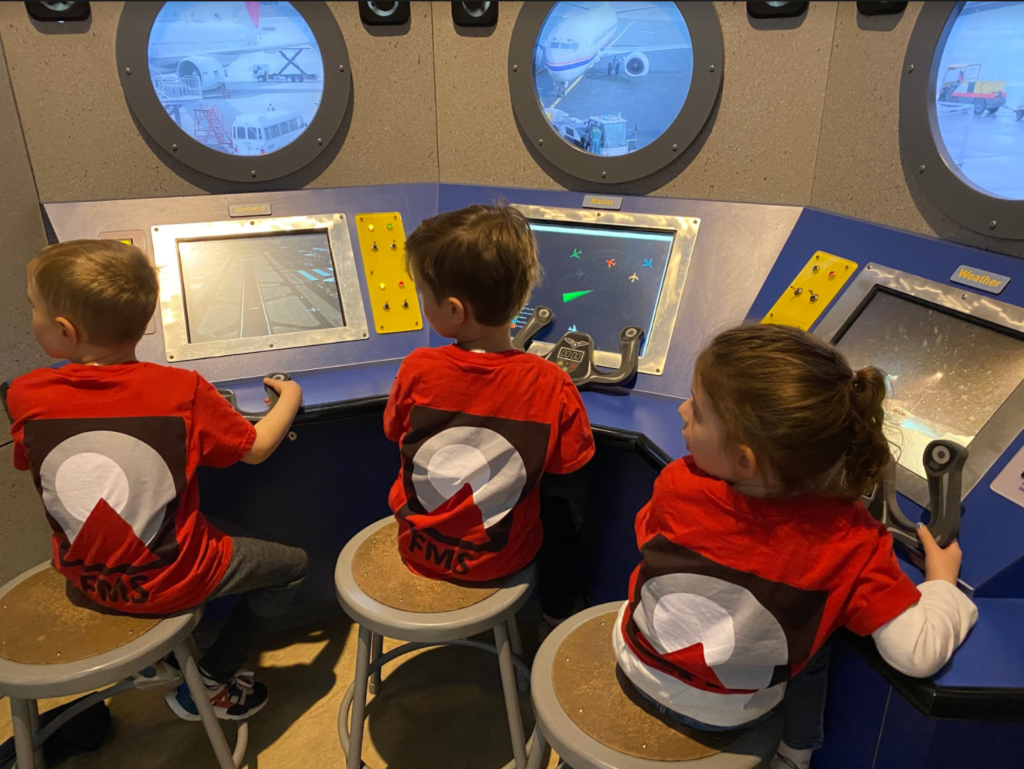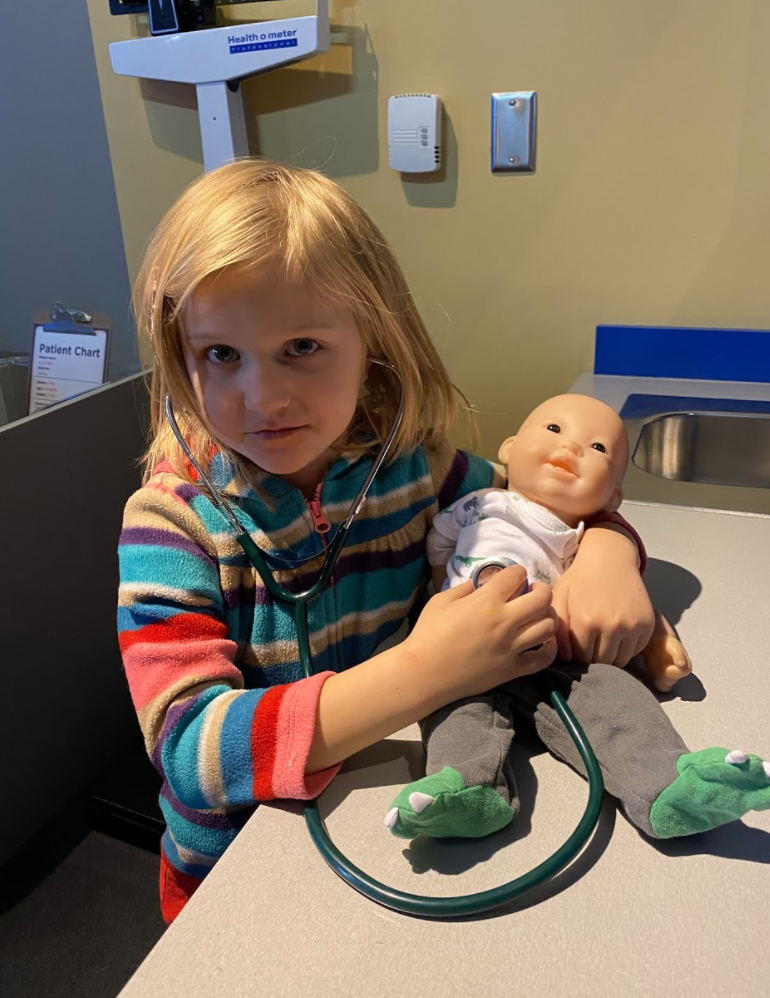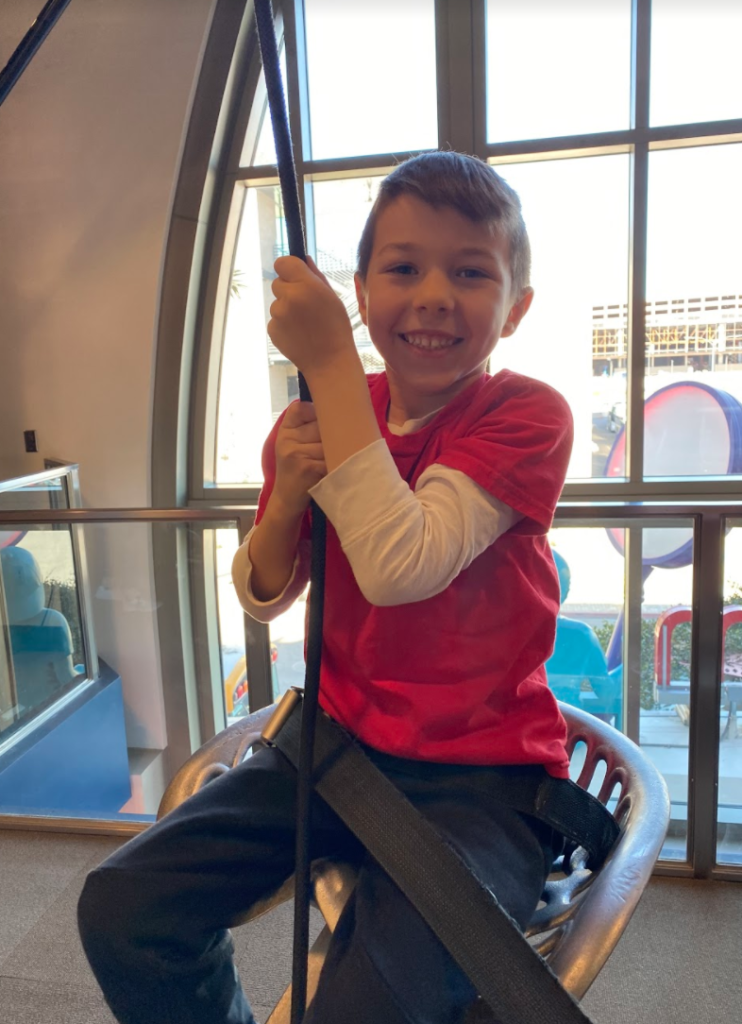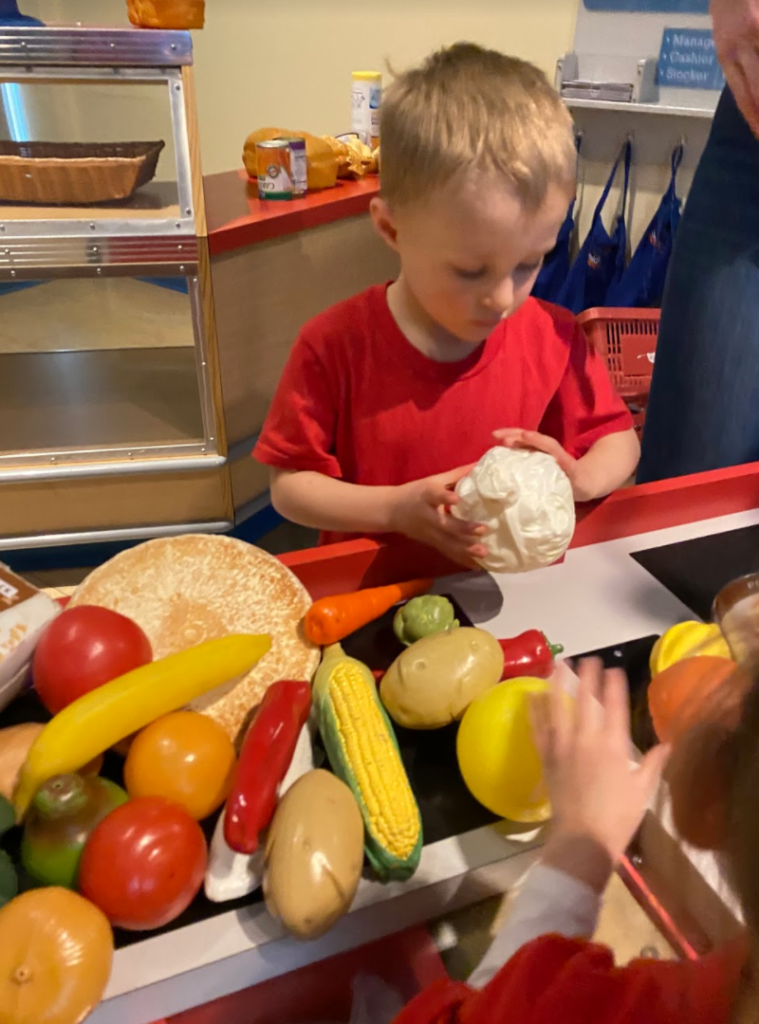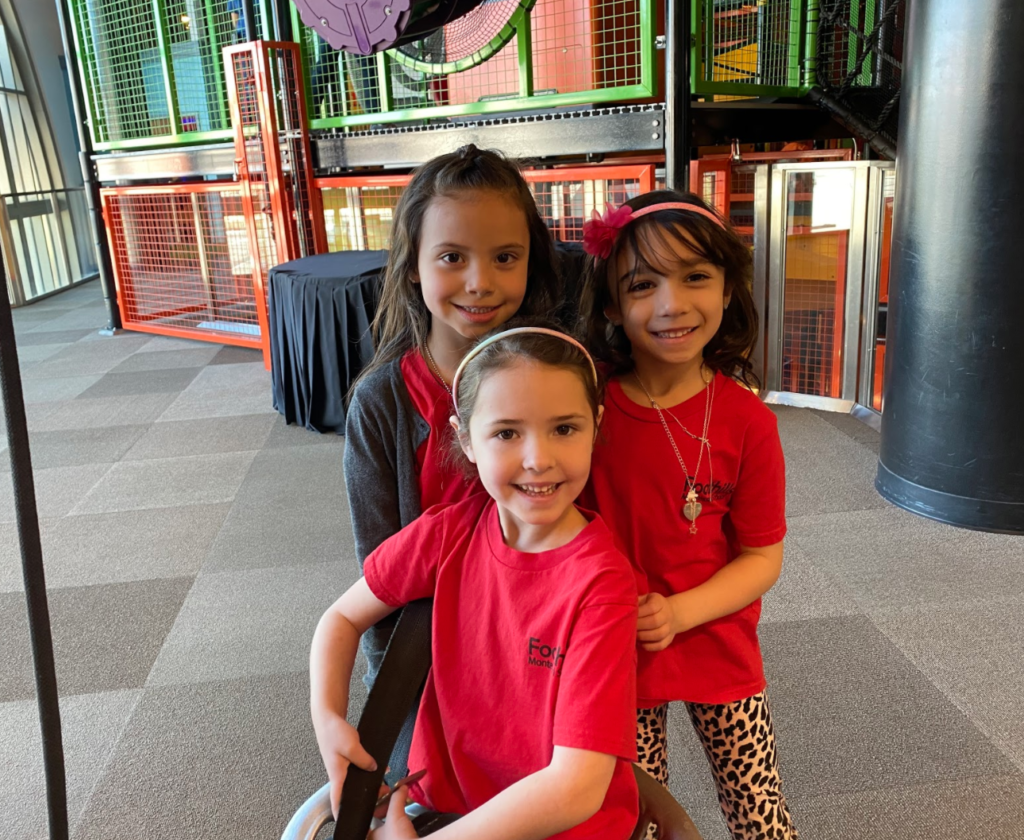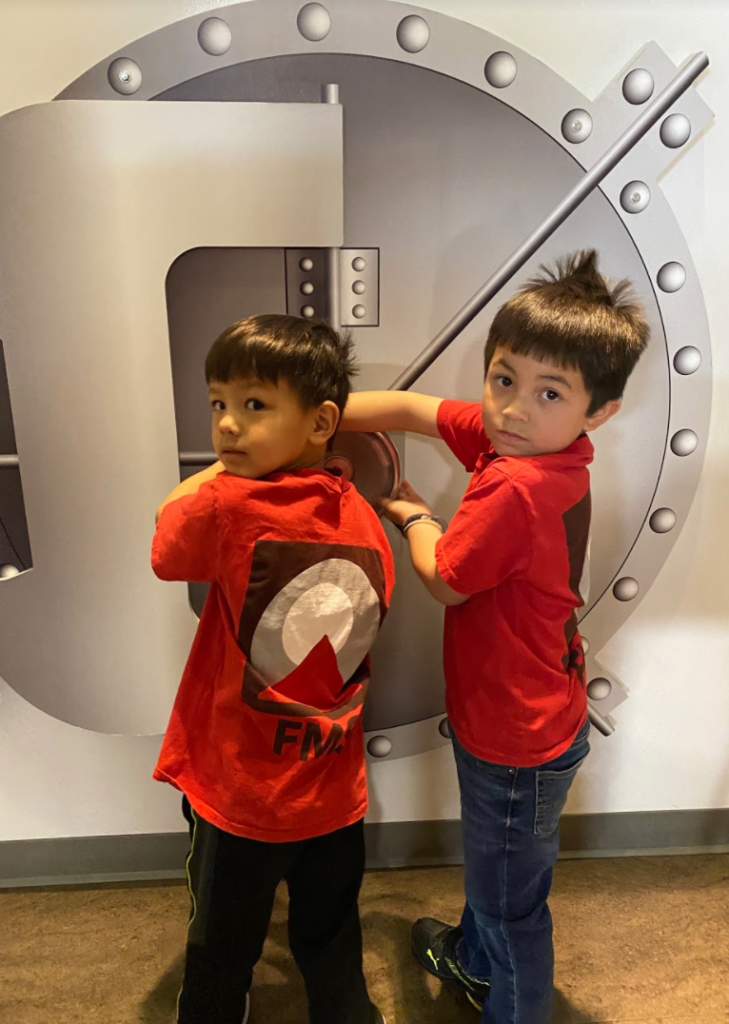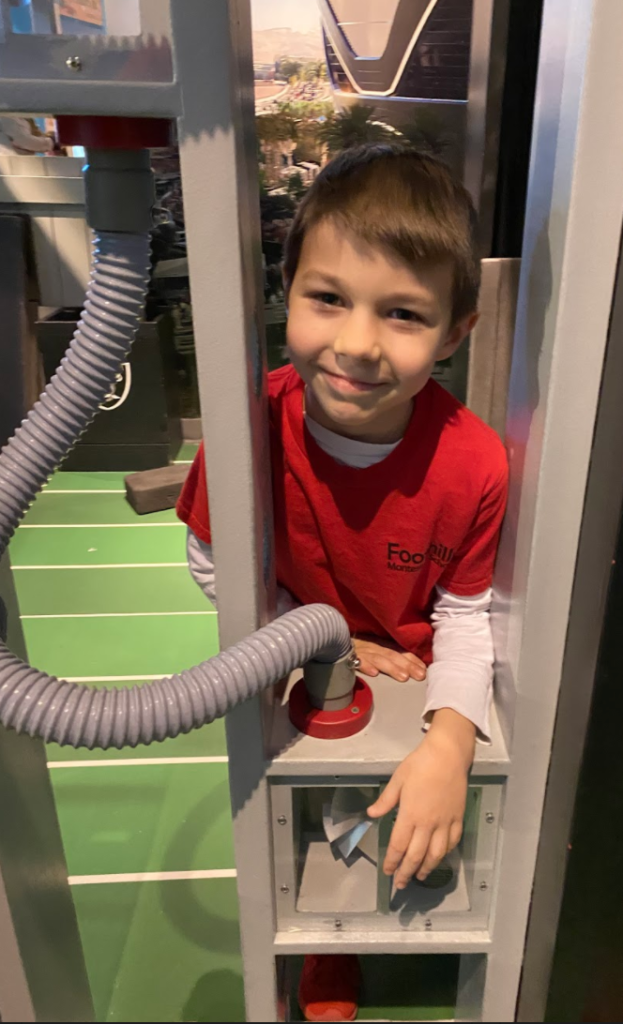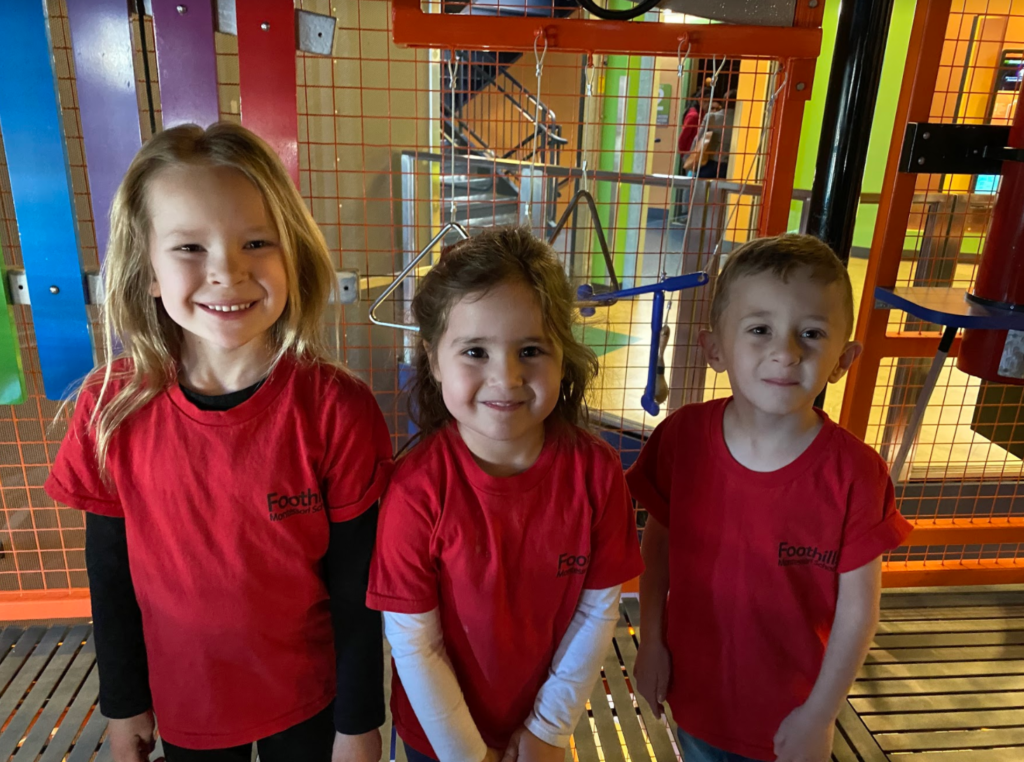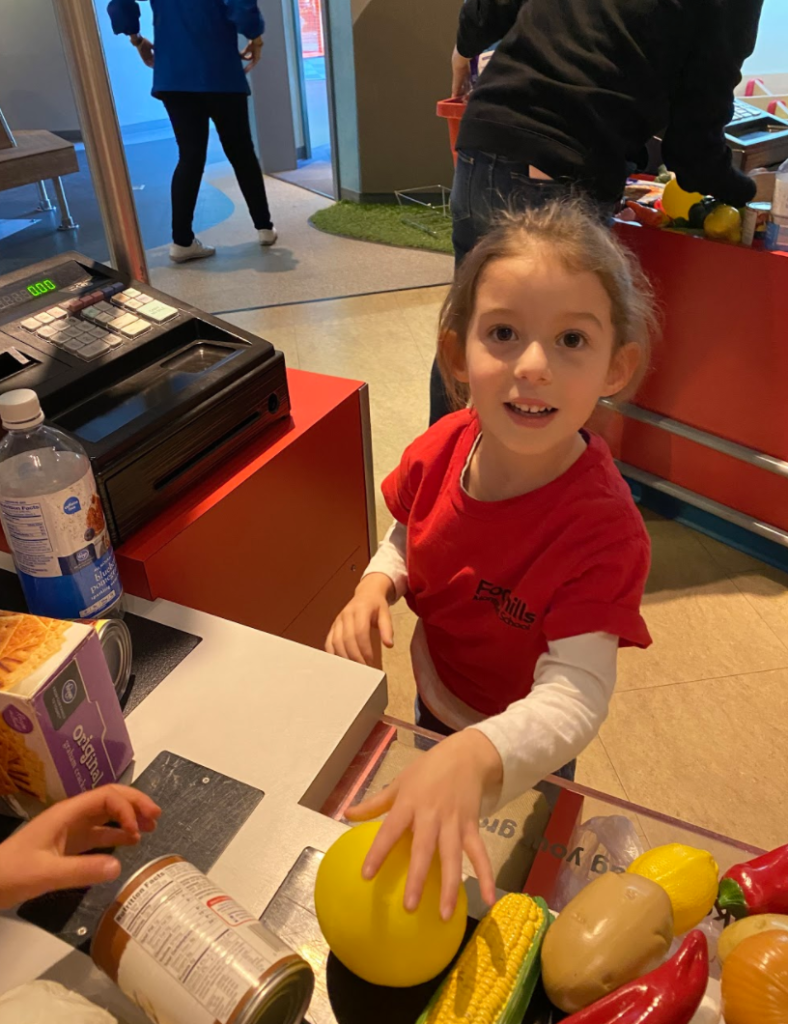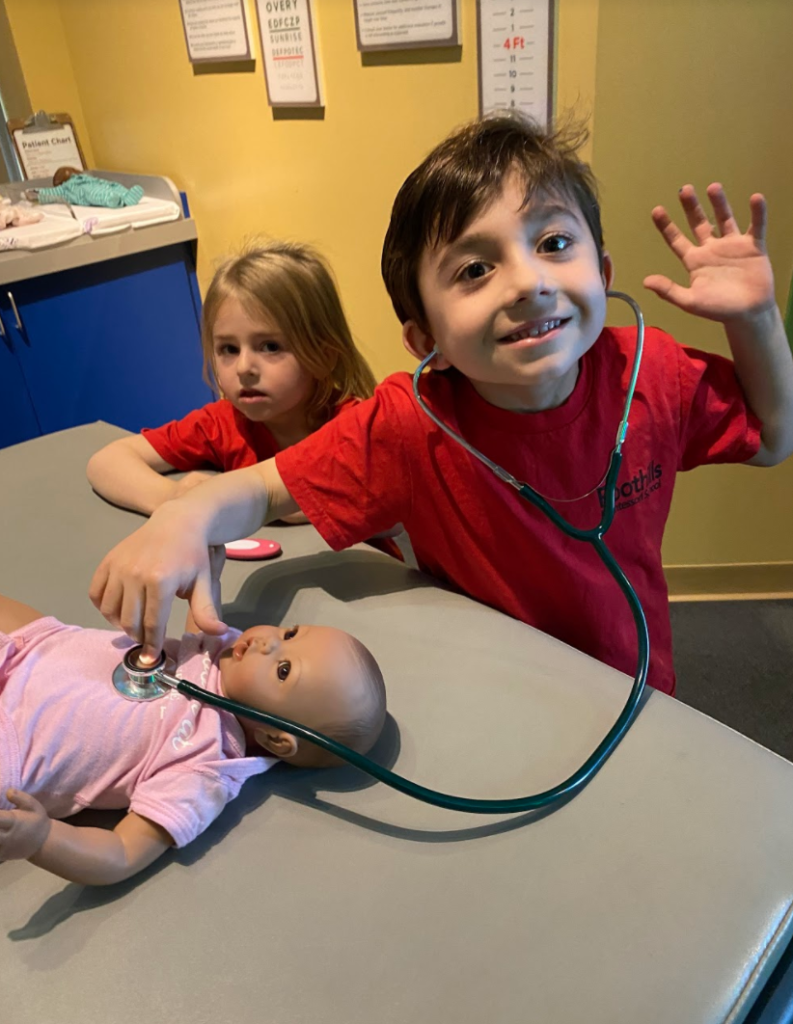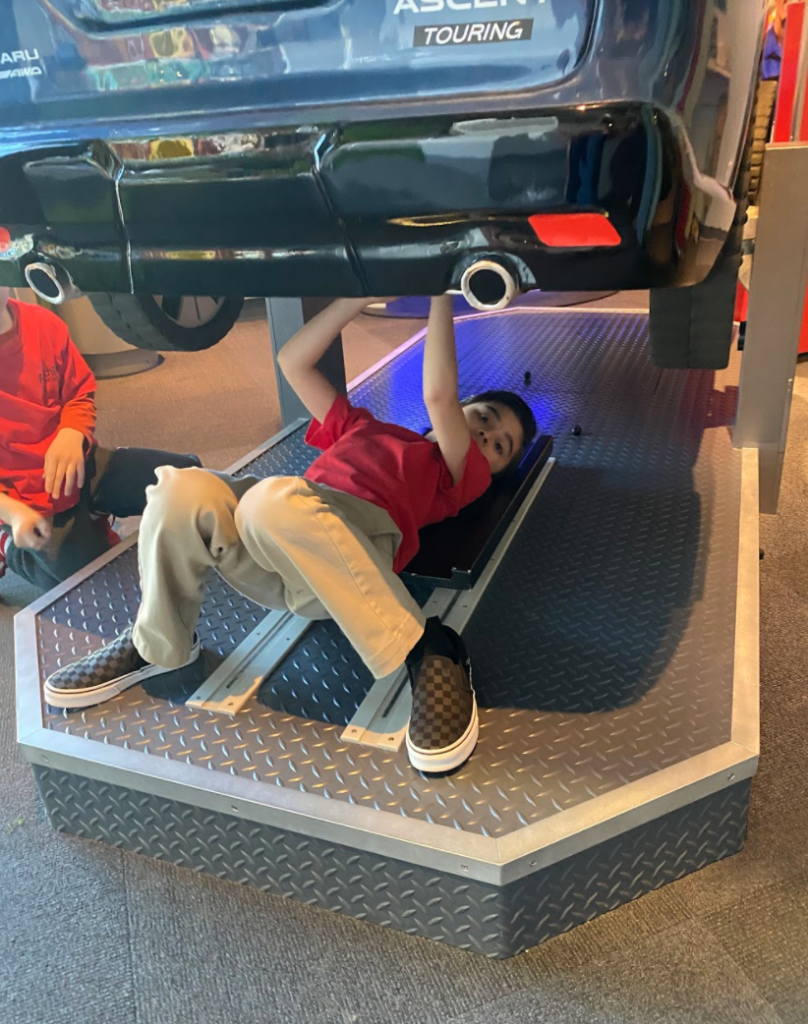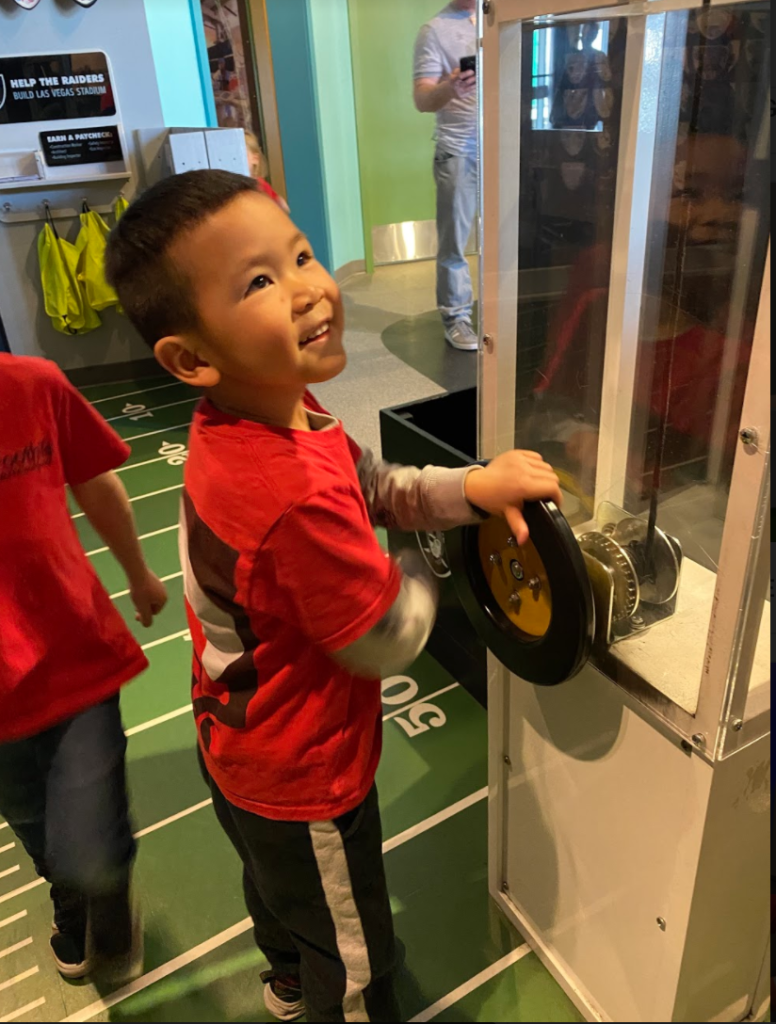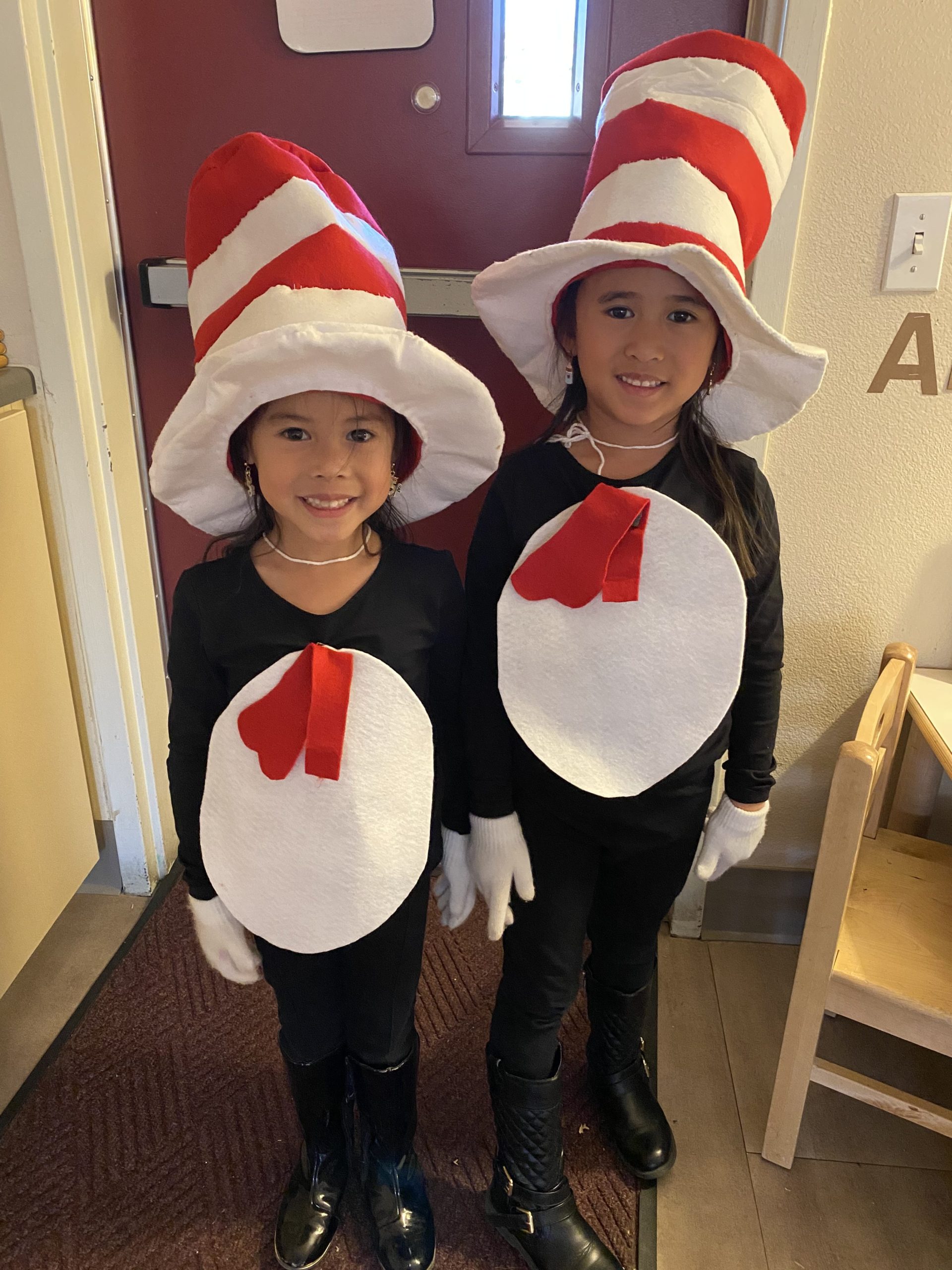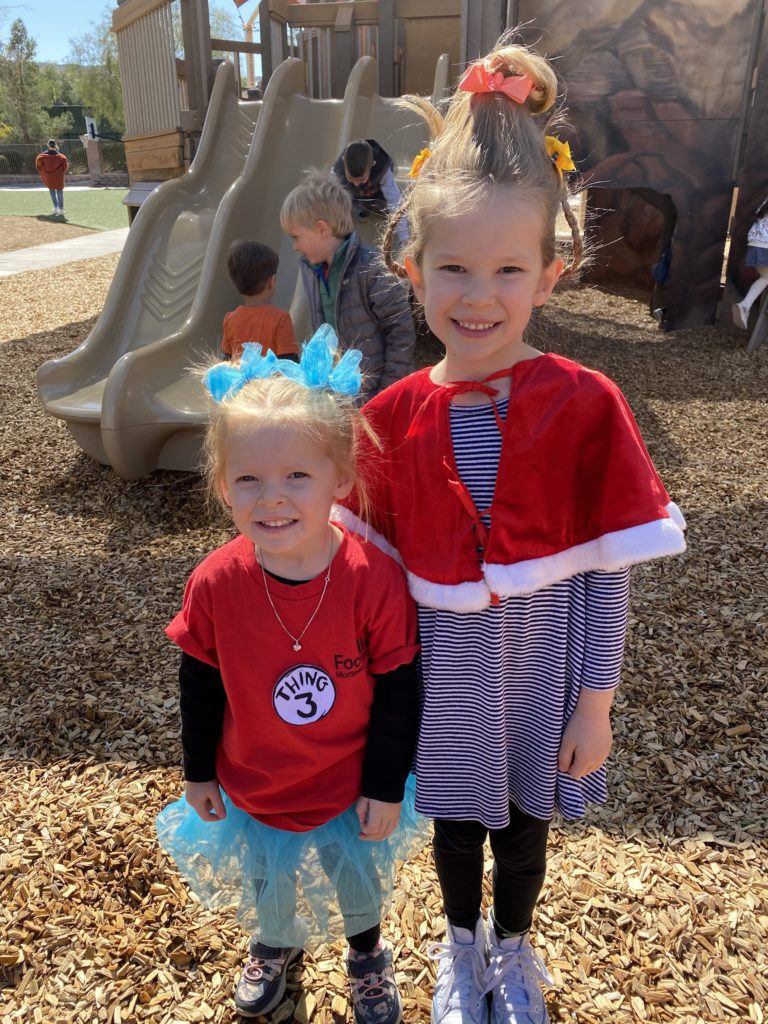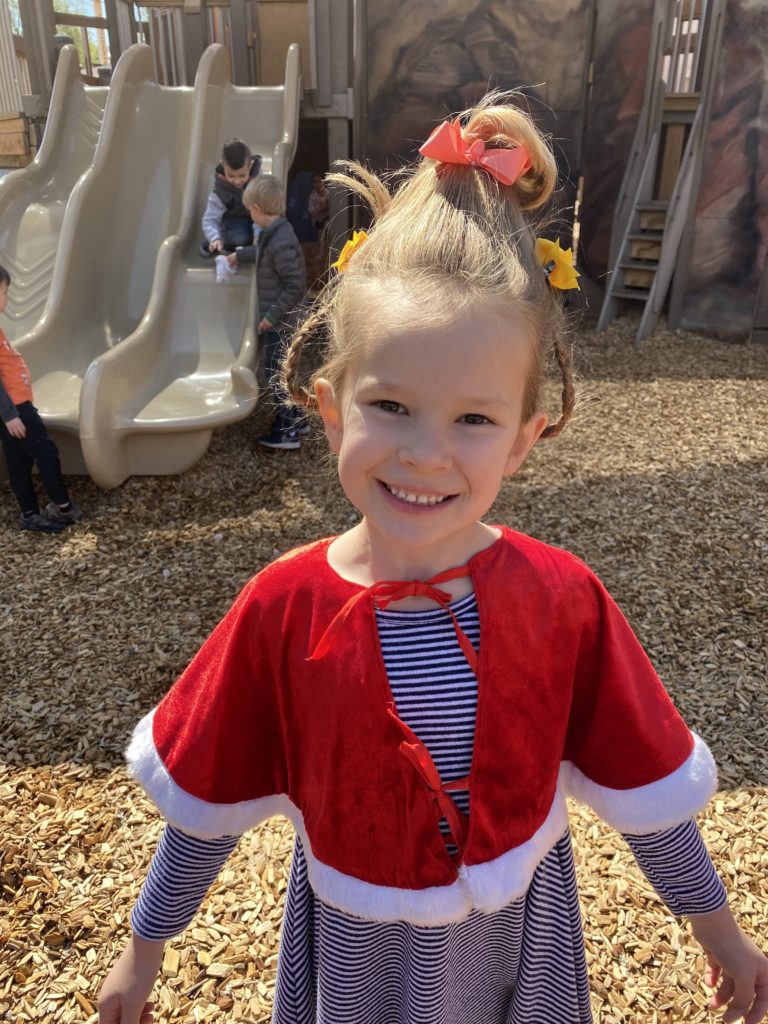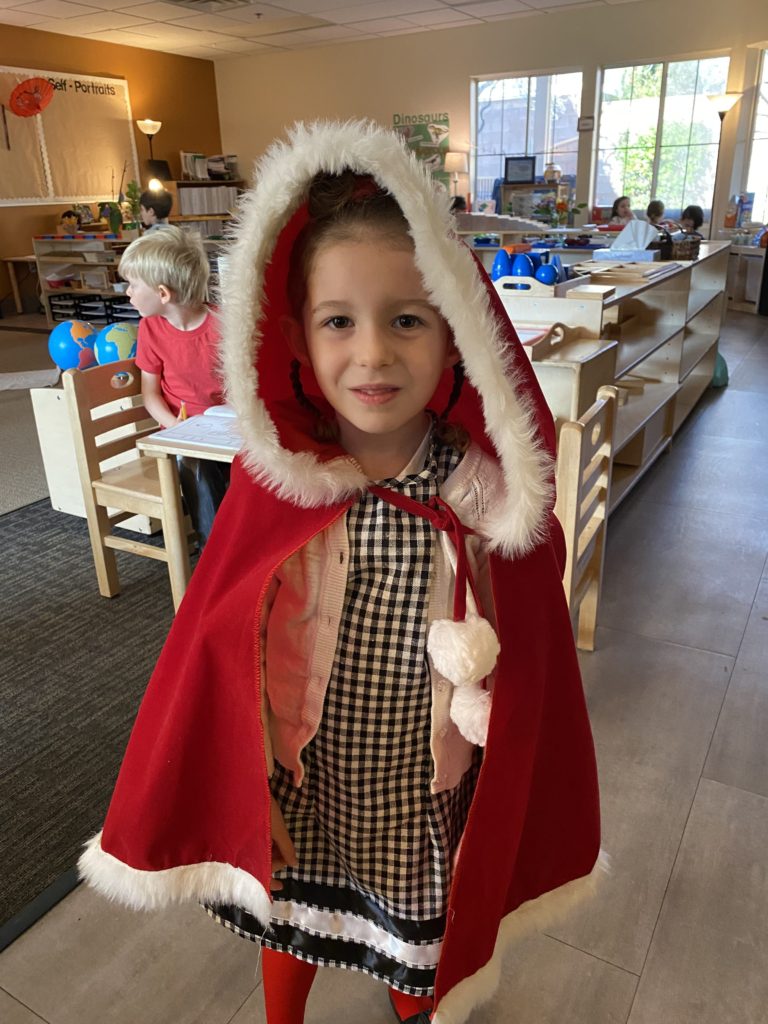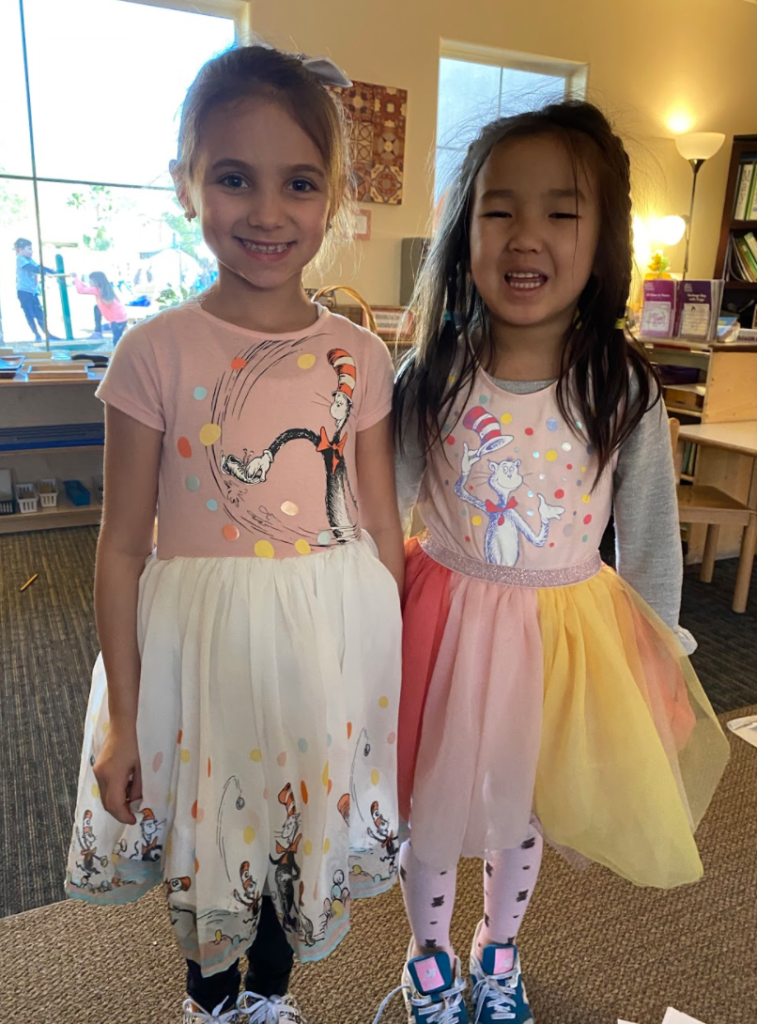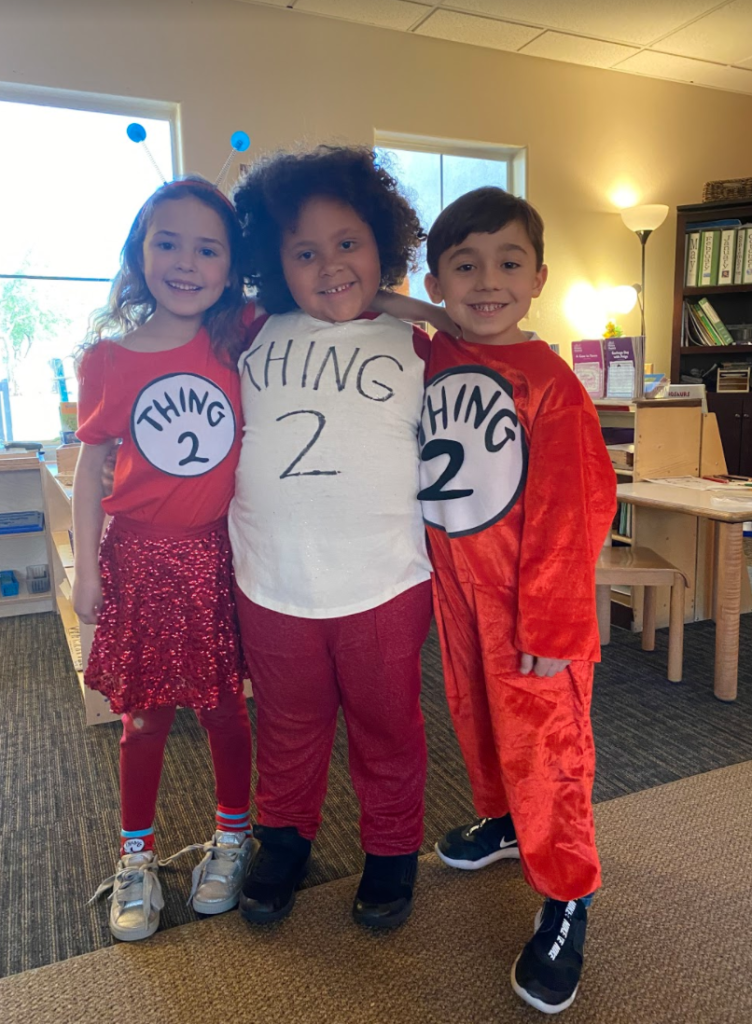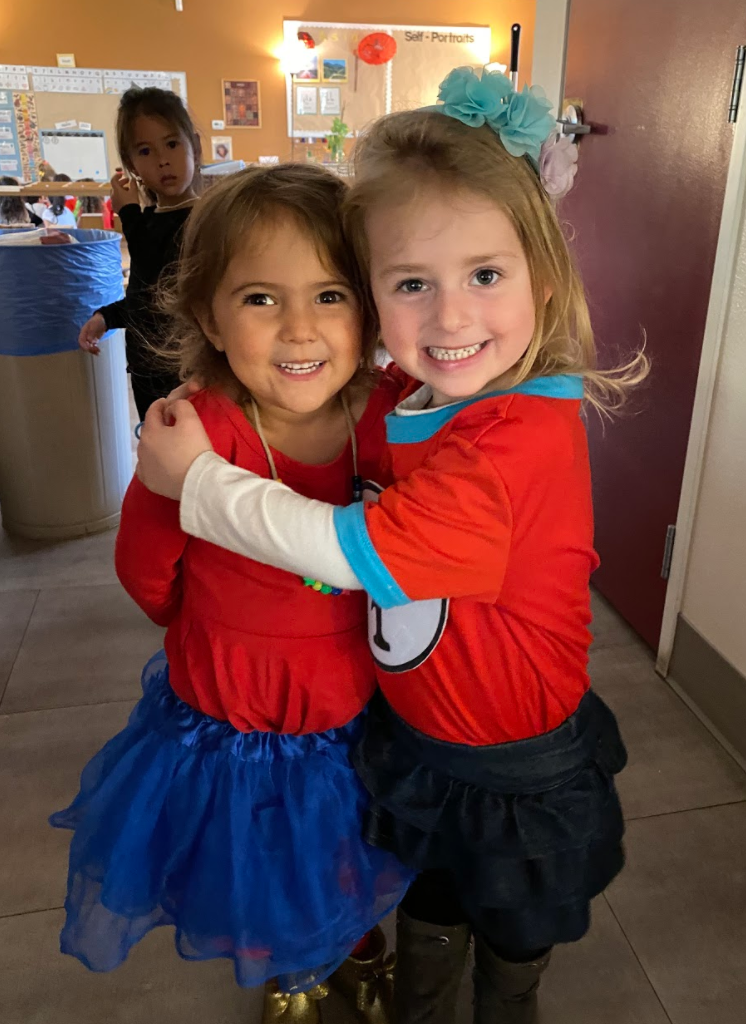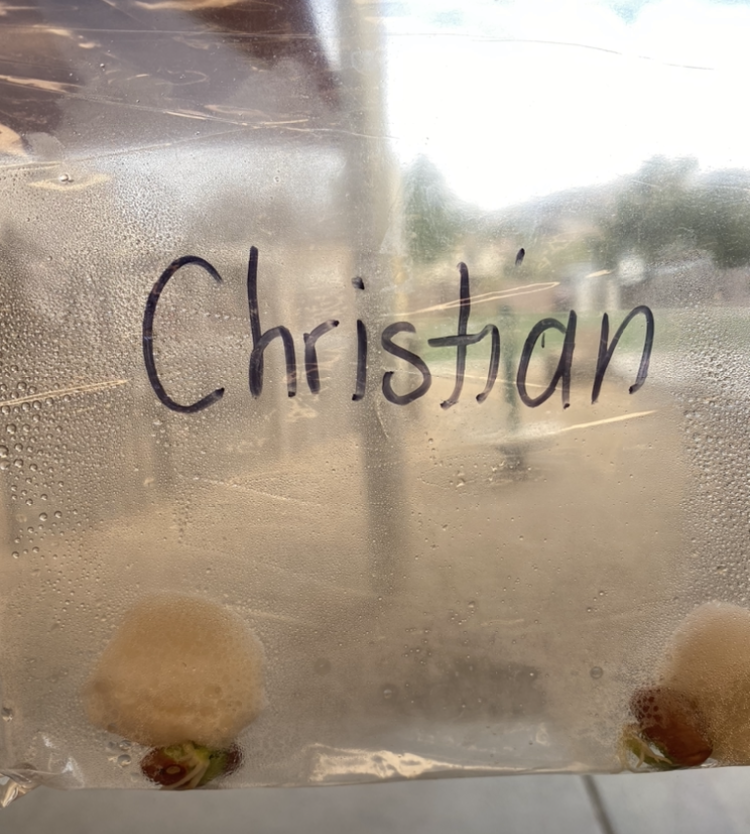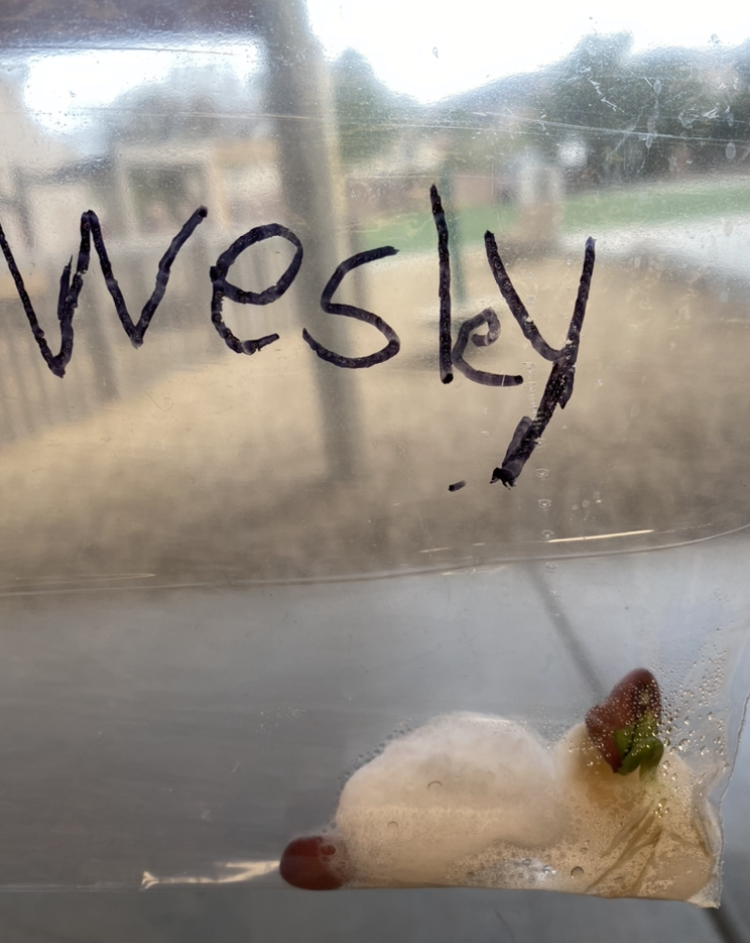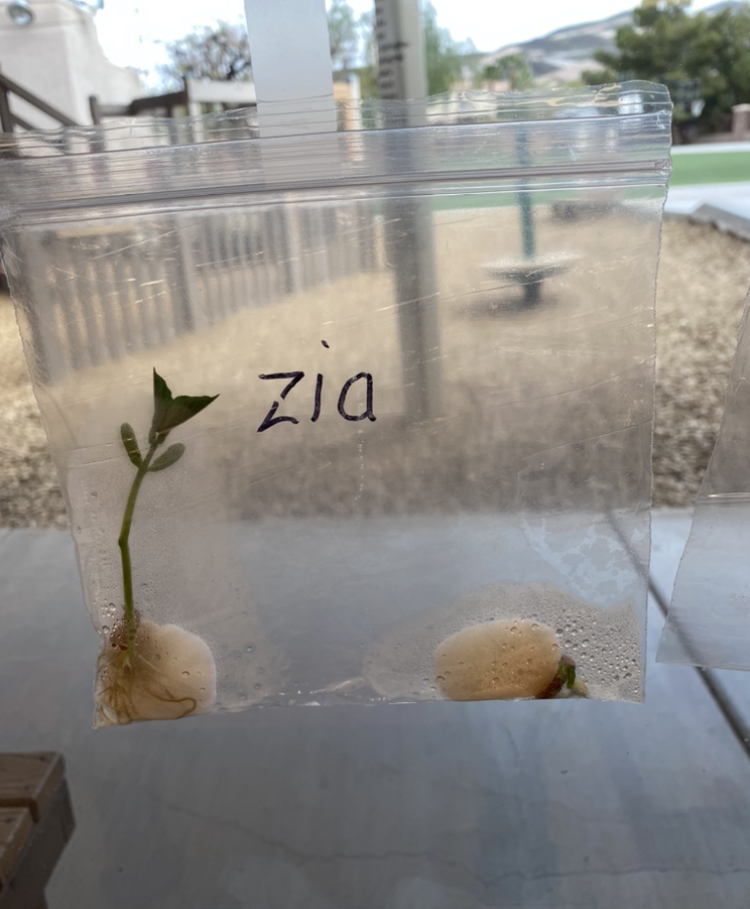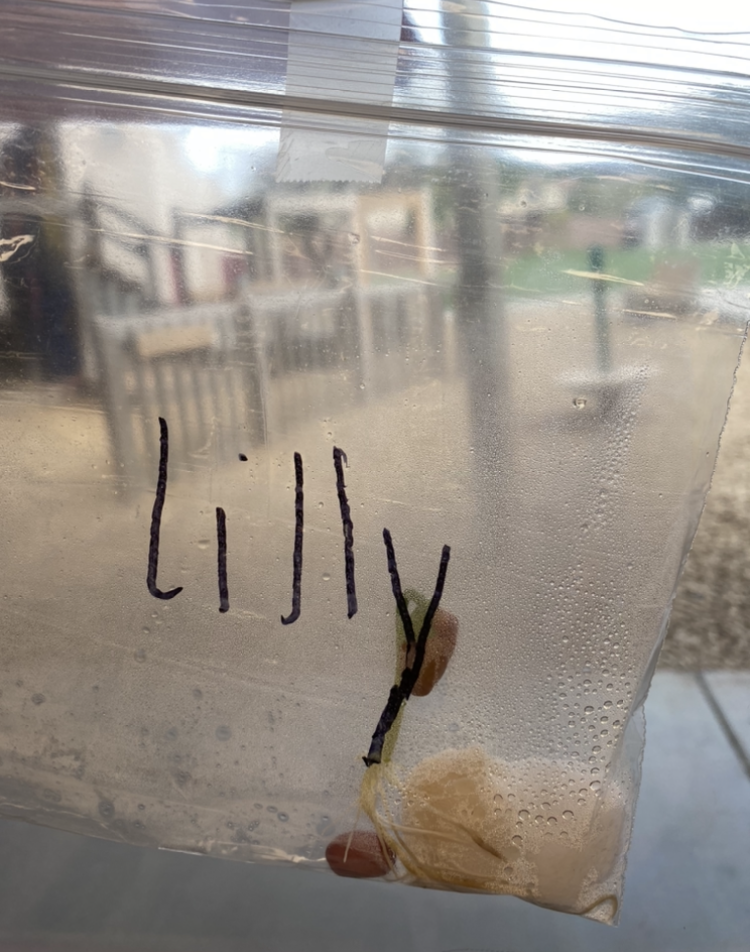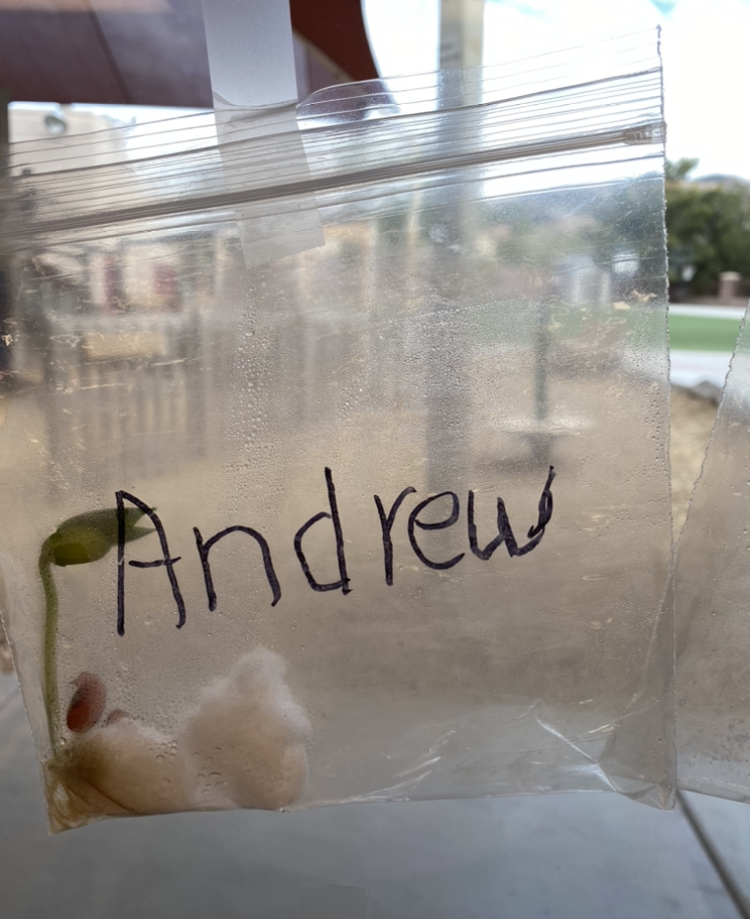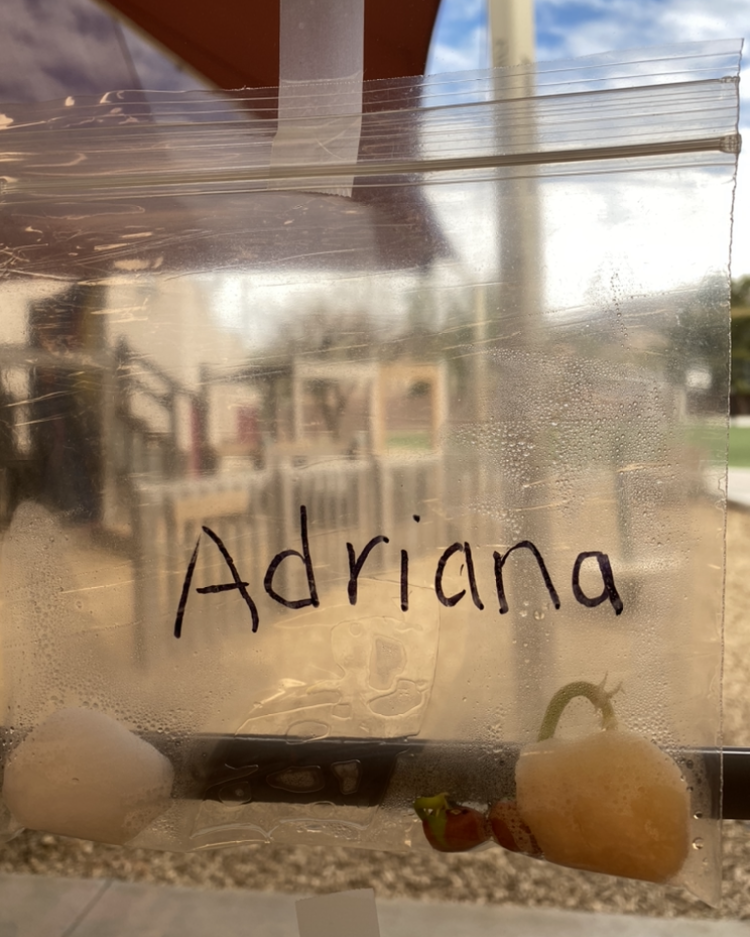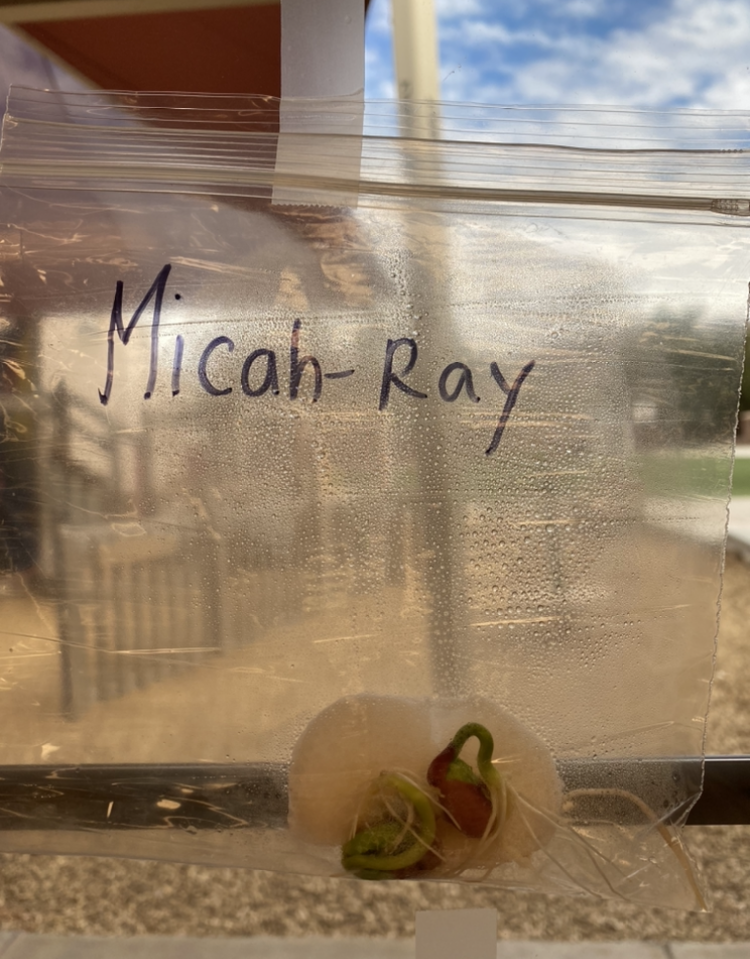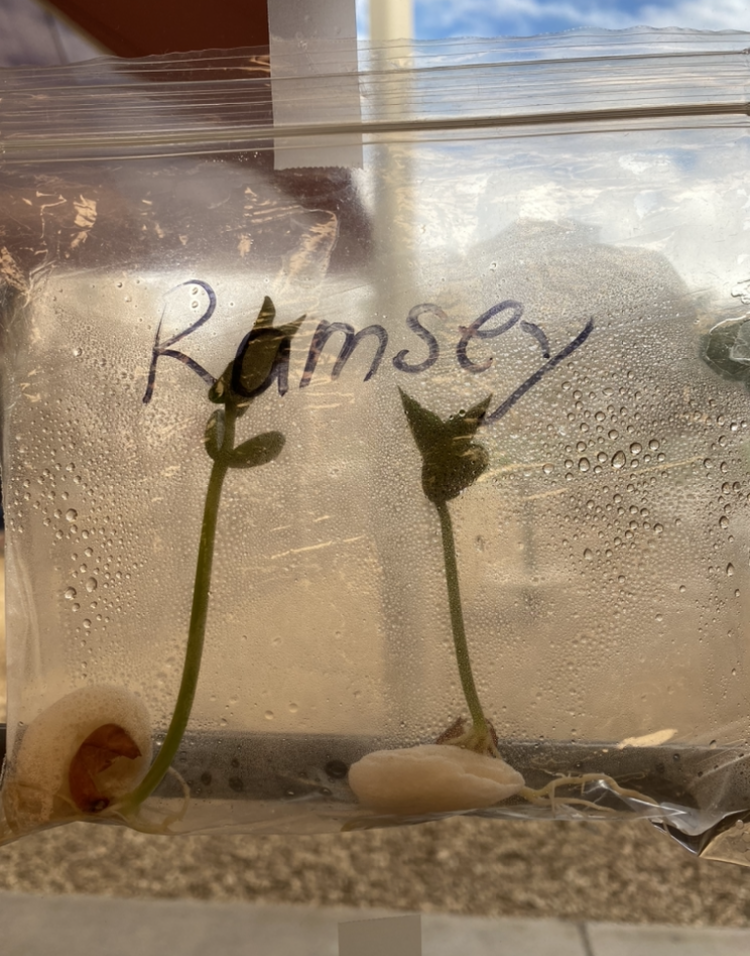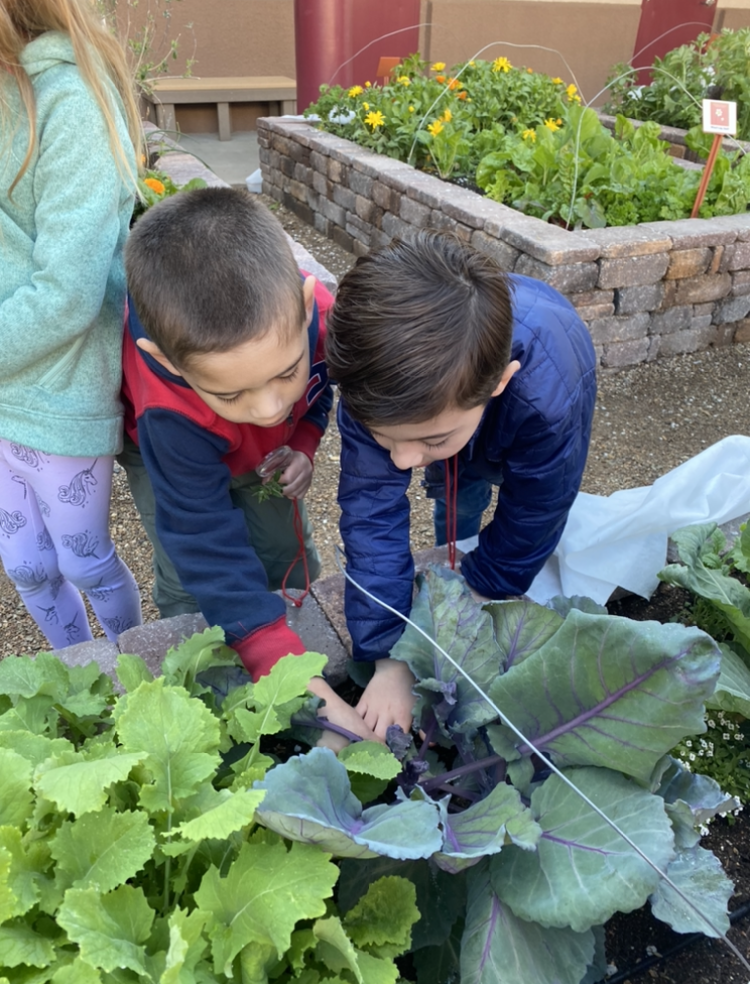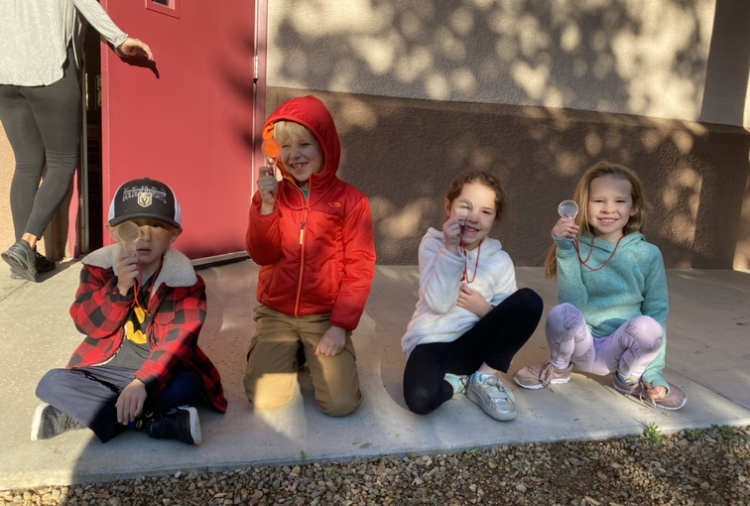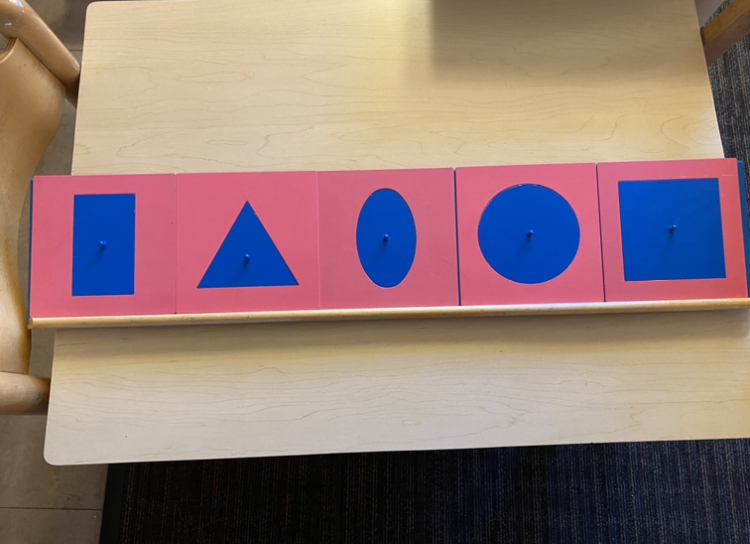Montessori education is structured on a multi-age basis and a three-year cycle, where teachers get the opportunity to really get to know the personalities and abilities of each of the children. A learning community is formed by the interactions between all of the children and their different levels of social and academic growth. In addition to teacher instruction, we depend upon our seasoned students to model behavior and use of the Montessori materials to their younger peers.
Independence is the ultimate goal of any Montessori classroom, and there are numerous steps and reinforcements that must be done on a daily basis to establish this foundation. Consistent process and repetition are key to building the muscle memory for a student to know what to do, and how to do it in a way that is effective for the individual child, and for the overall experience for the class as a whole. For example, we ask that children put their work away when they are finished using it. The work or job goes back in the same place that they got it from, so that the material is ready for the next child to use. We reinforce this lesson over and over again, until the children are able to do this independently and it becomes part of the process of the classroom.
Dr. Montessori began her work in the slums of Italy working with children who had never experienced school, let alone a school that was focused on communicating with the children in a practical natural way. Her intent was to give her students an environment that was interesting, “sized for children,” and directly addressed their status as developing, individual people. She revolutionized the perspective that these young children could learn academically along with developing their social skills of becoming productive, independent thinkers. This is a tradition we continue in our classroom today.








